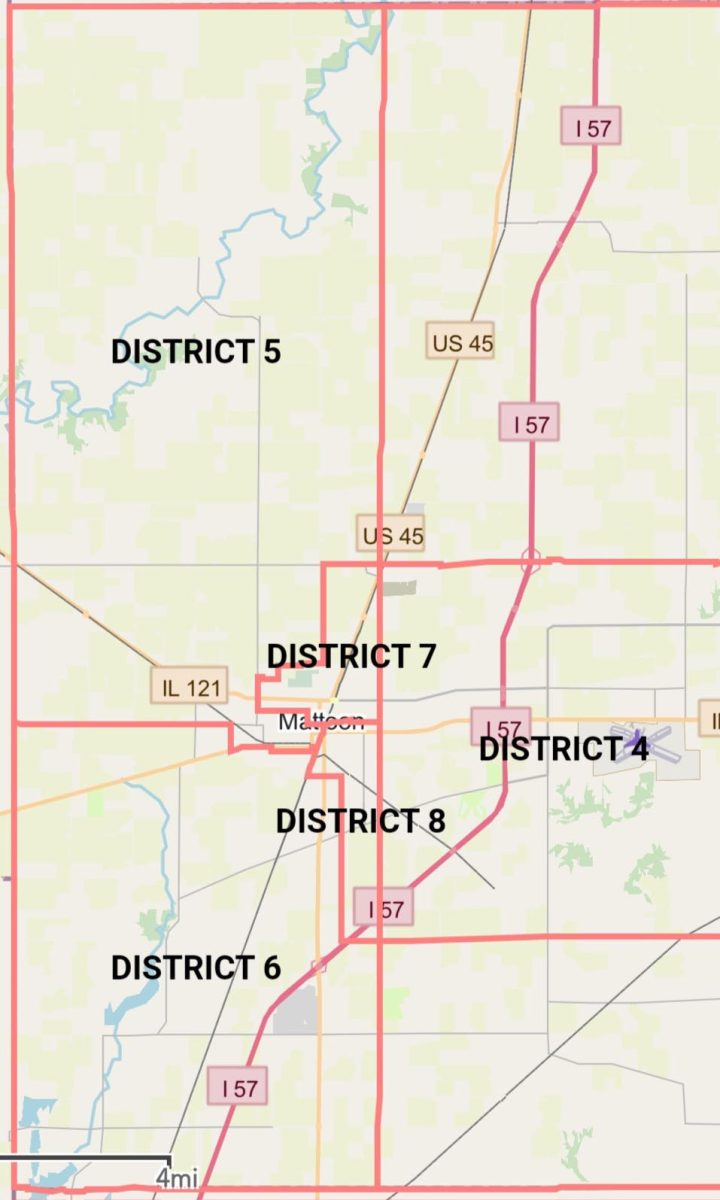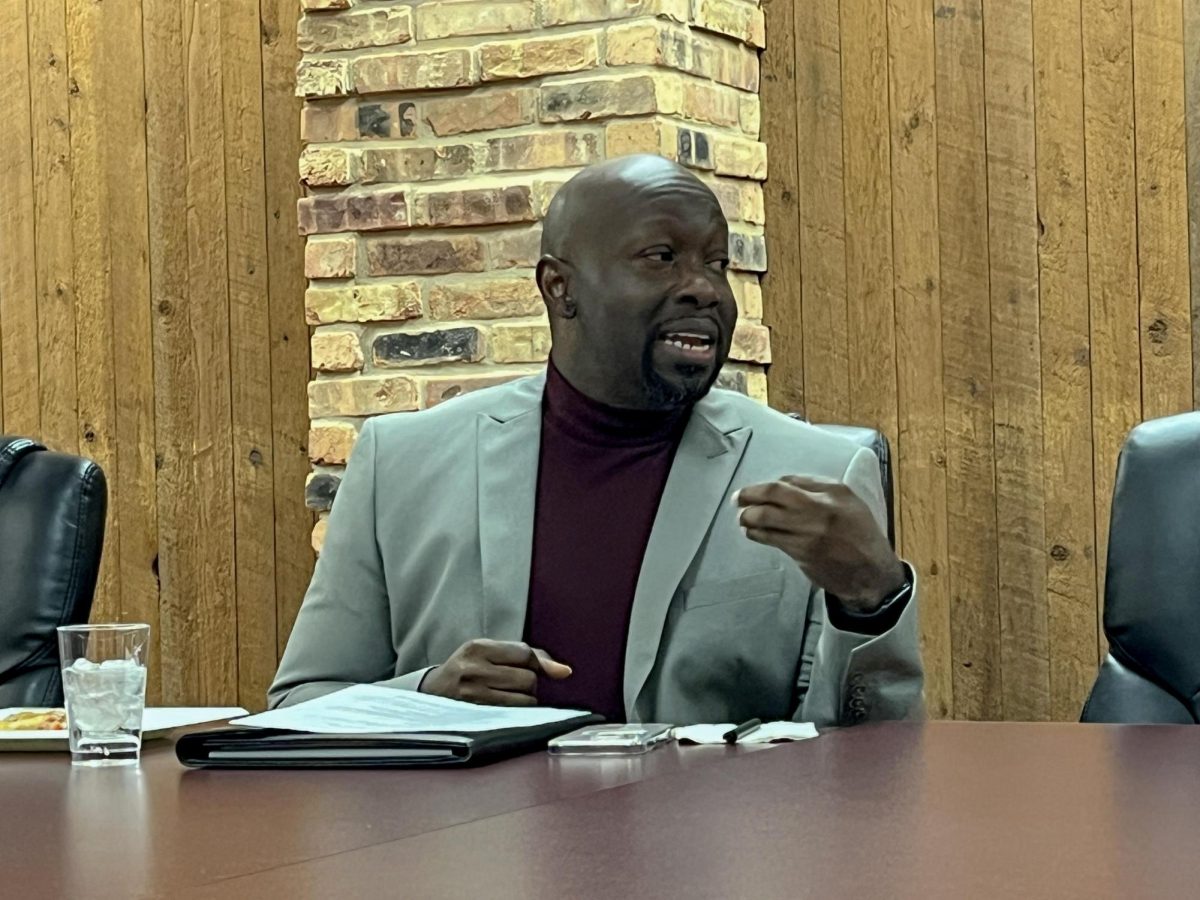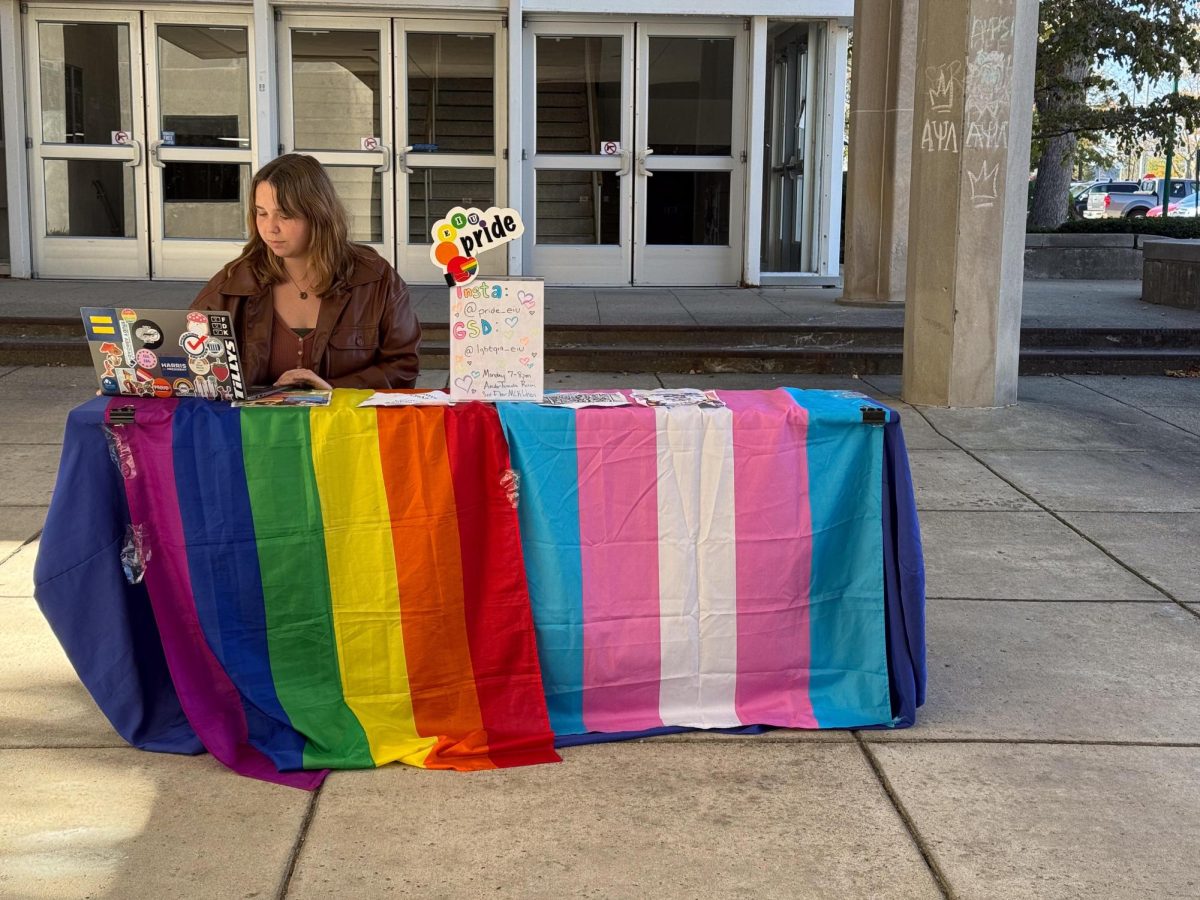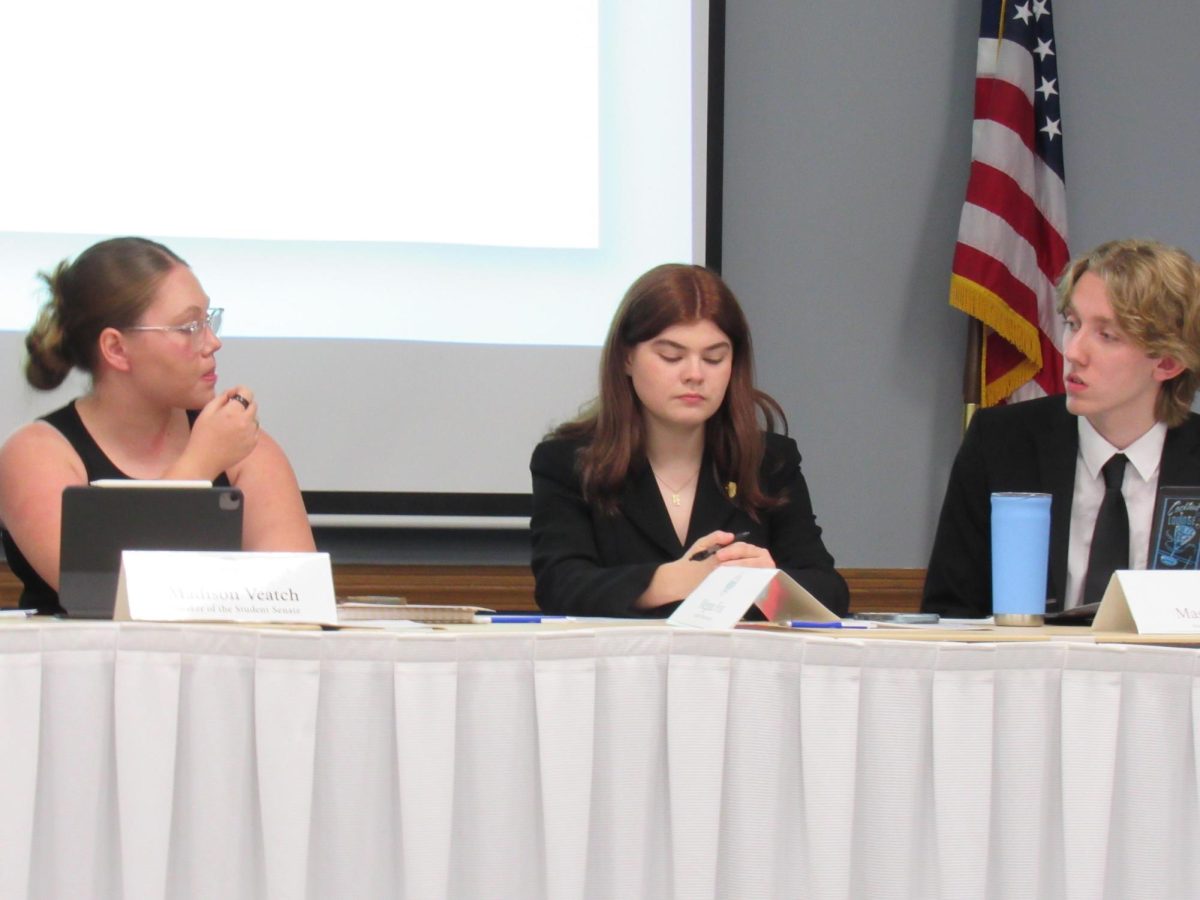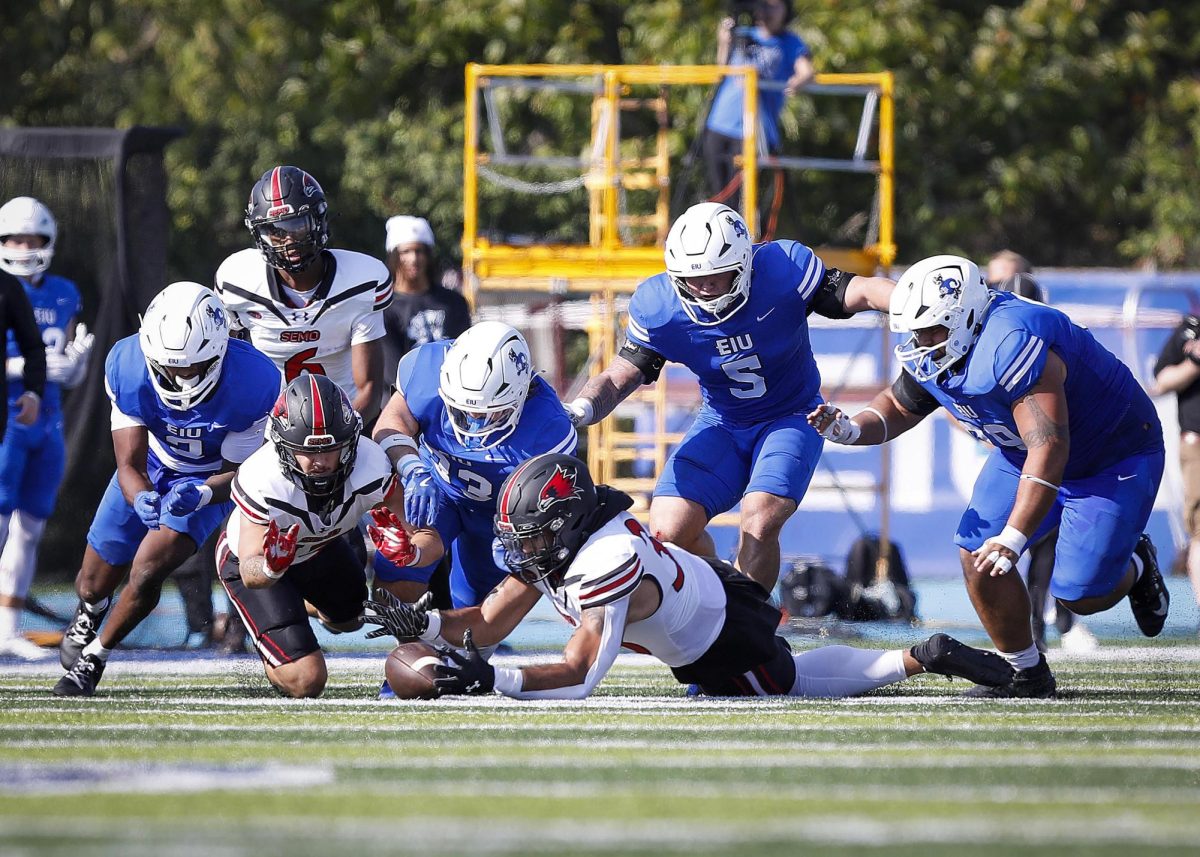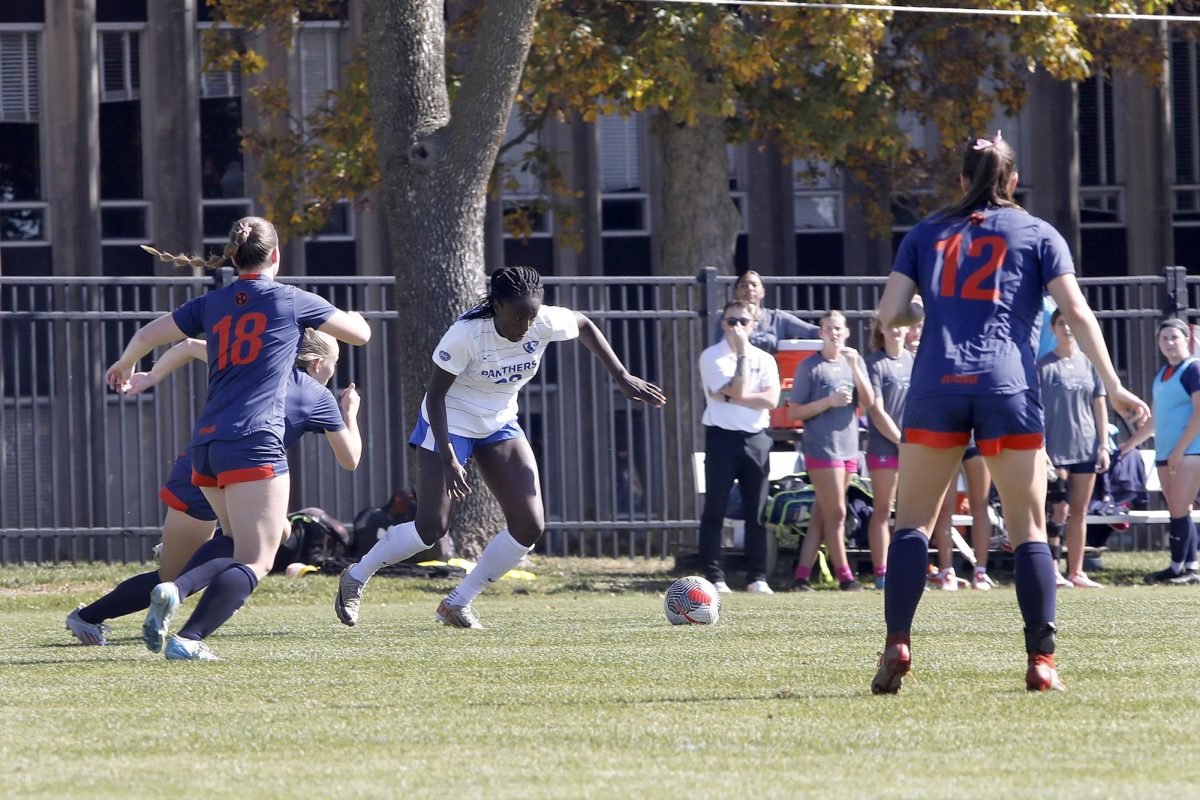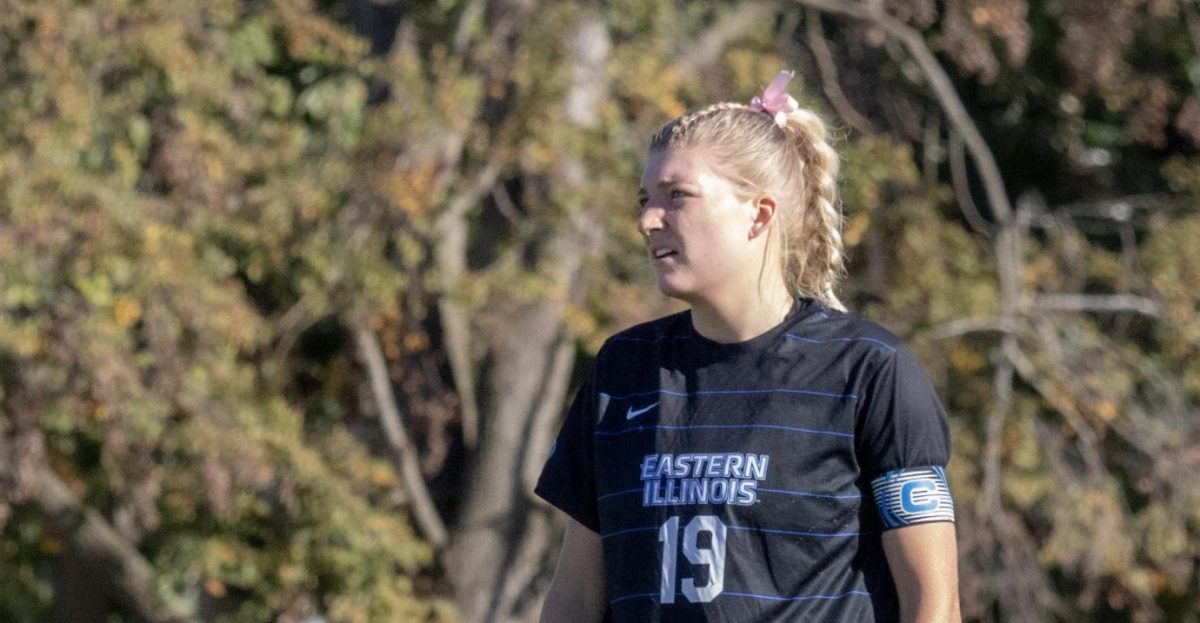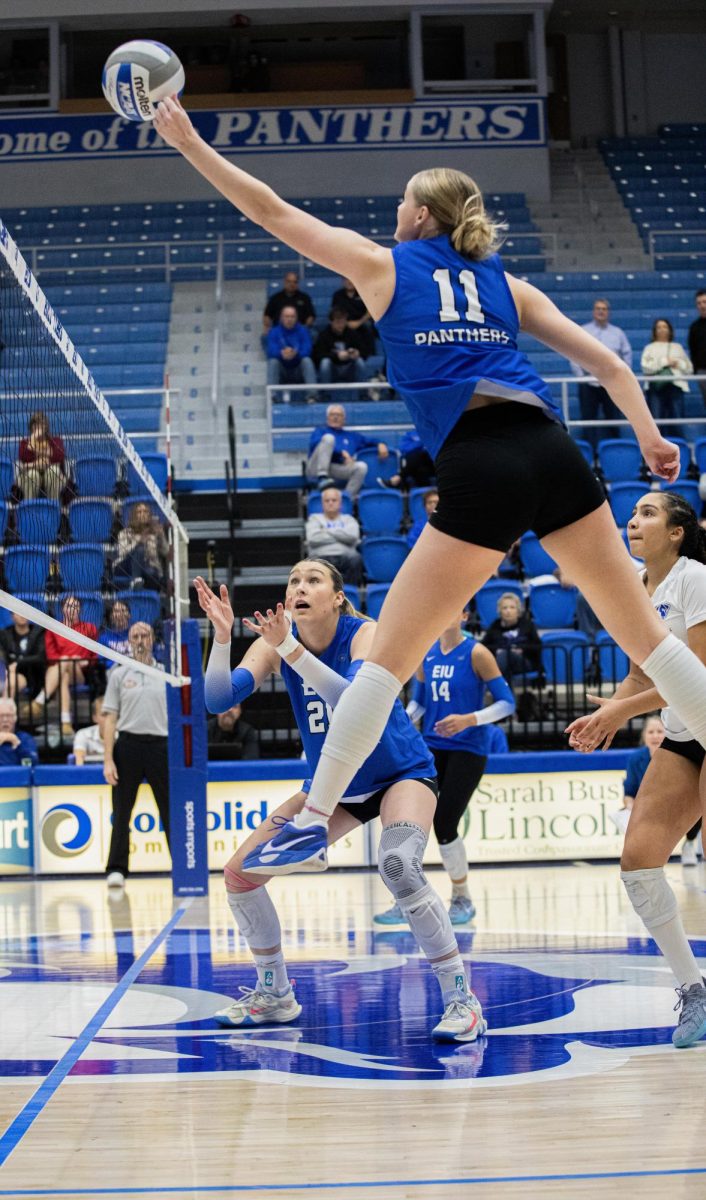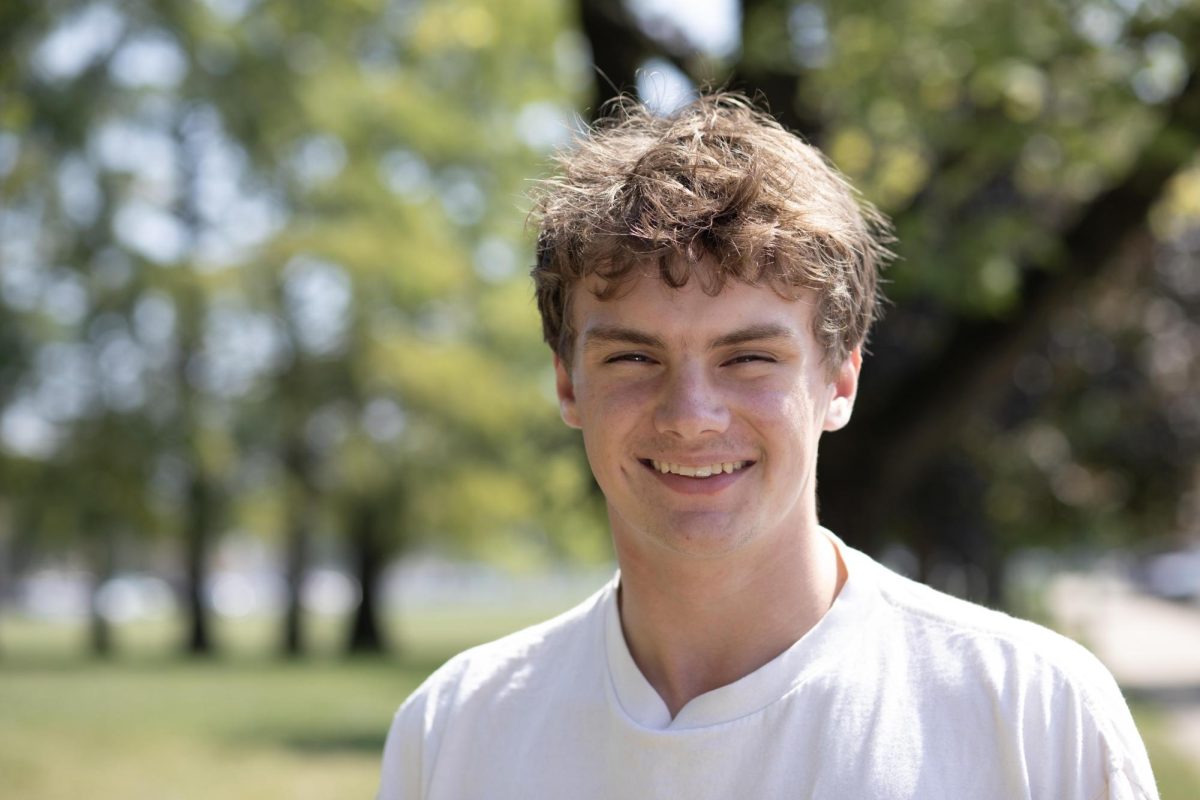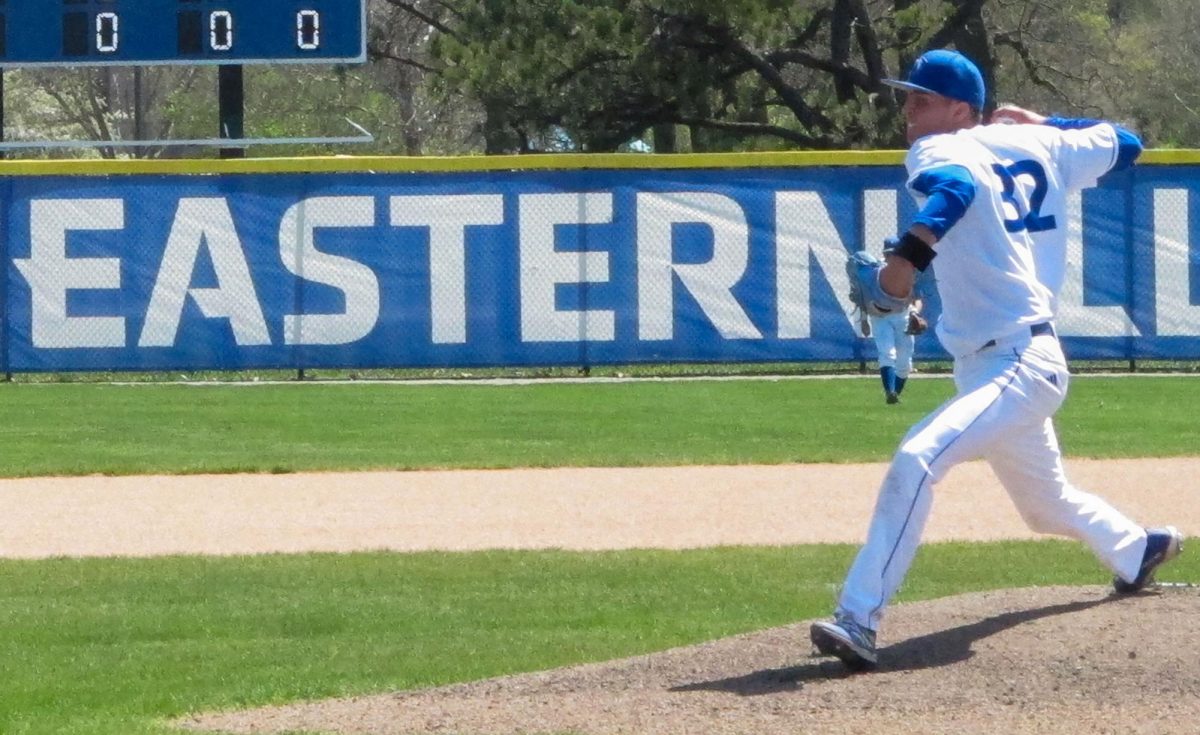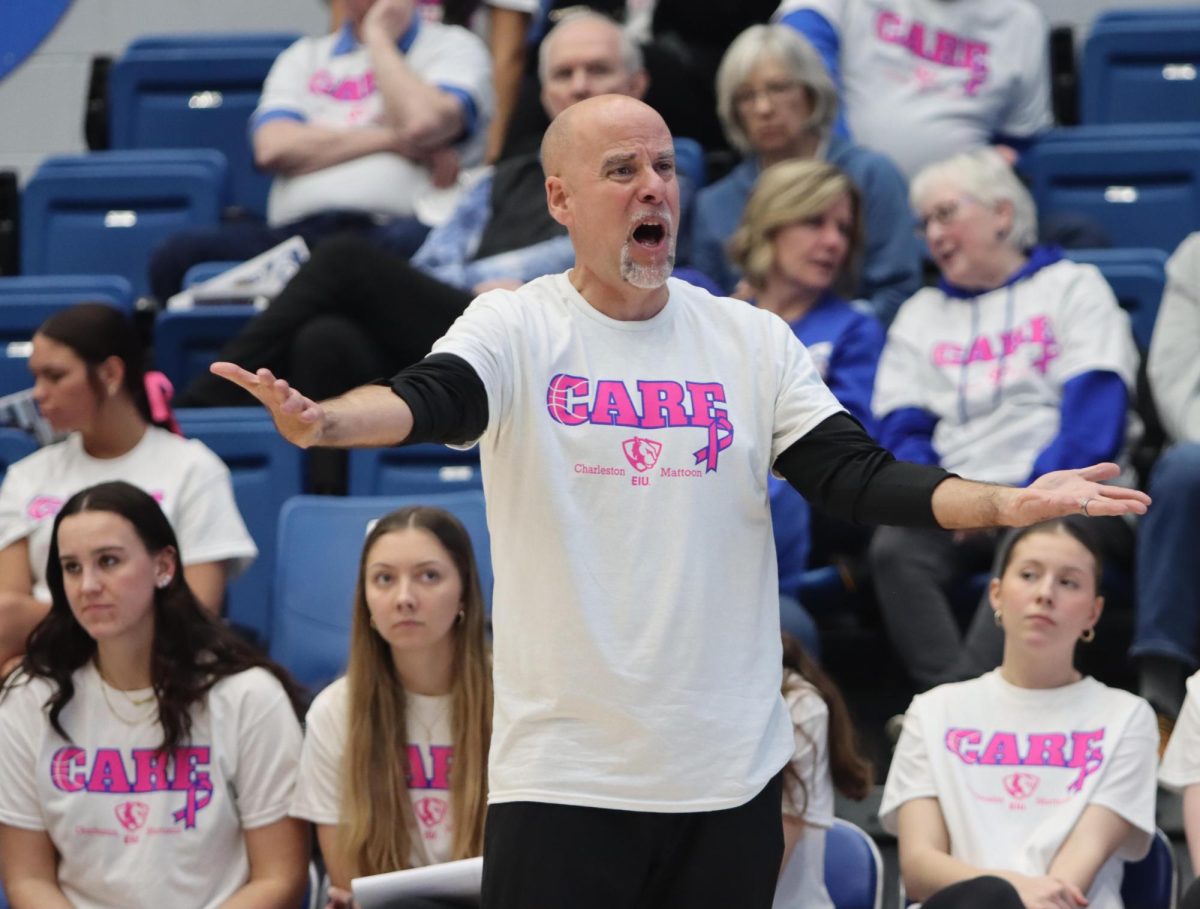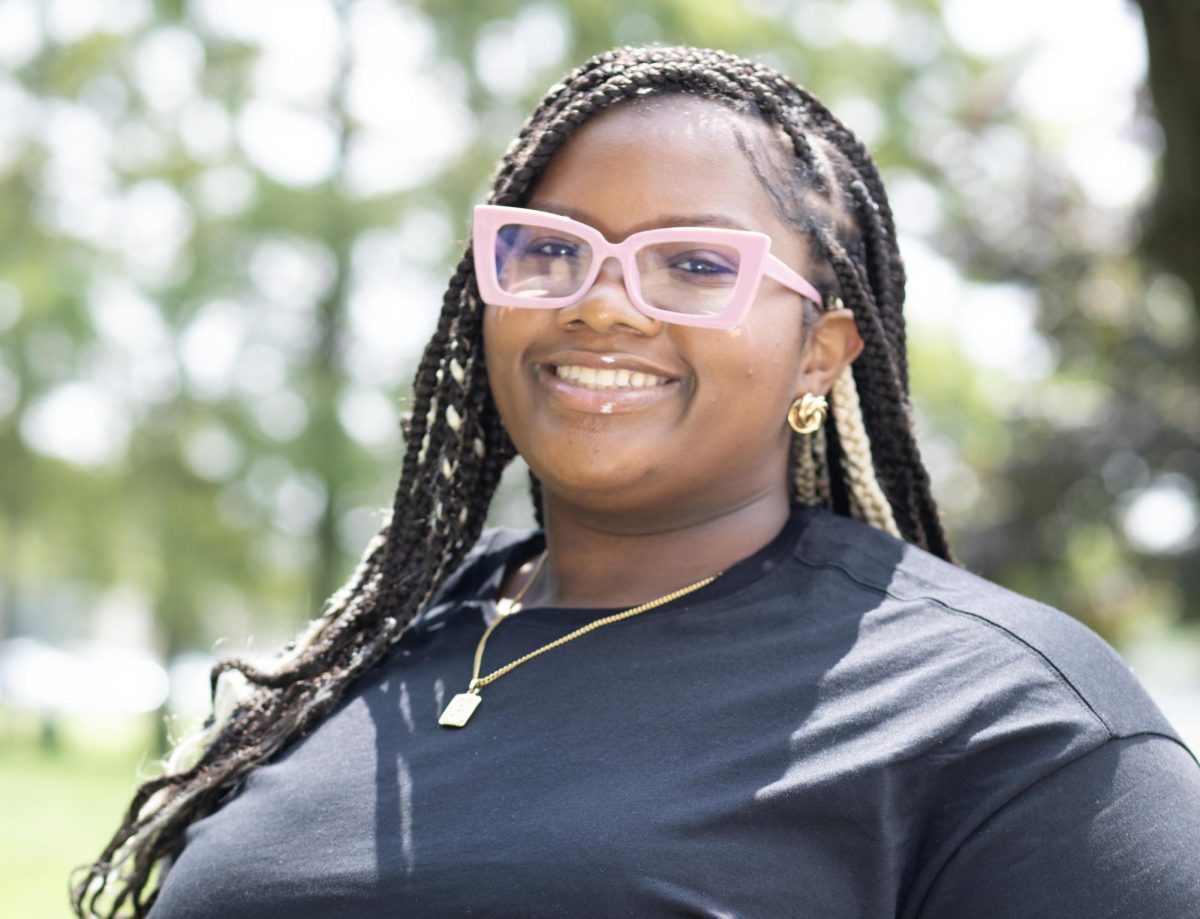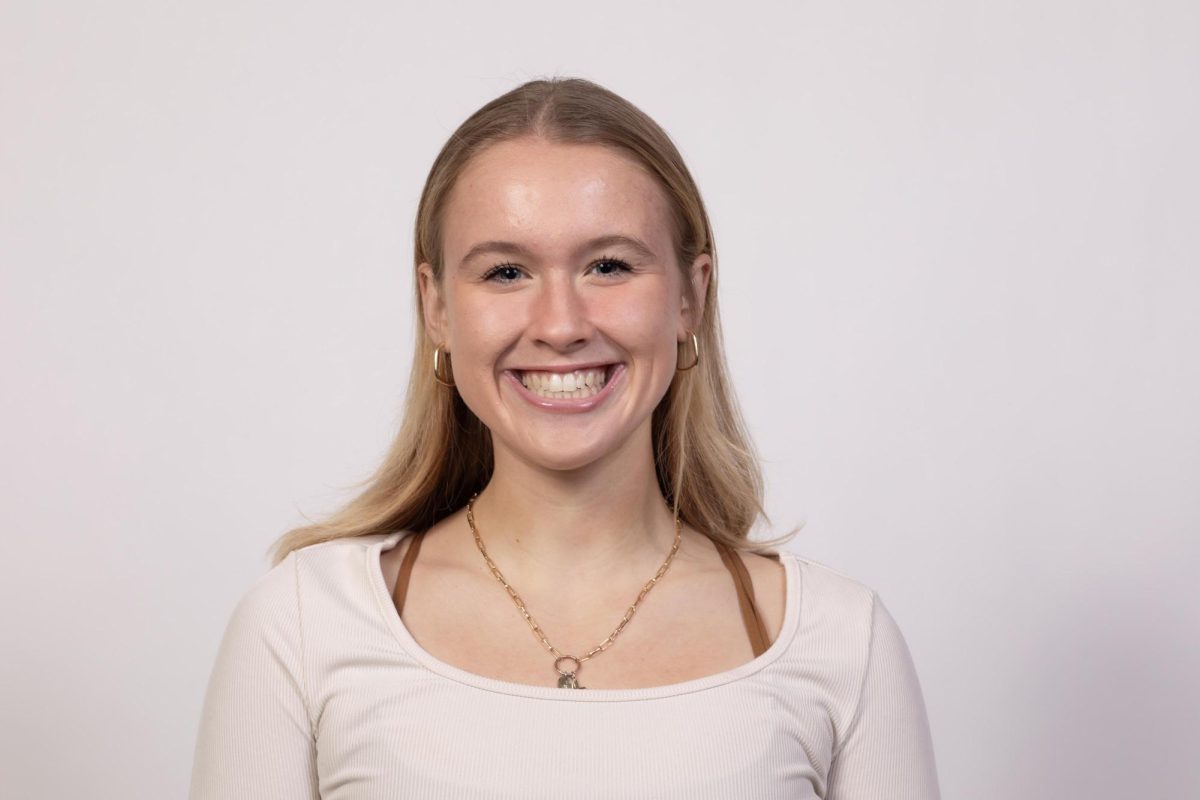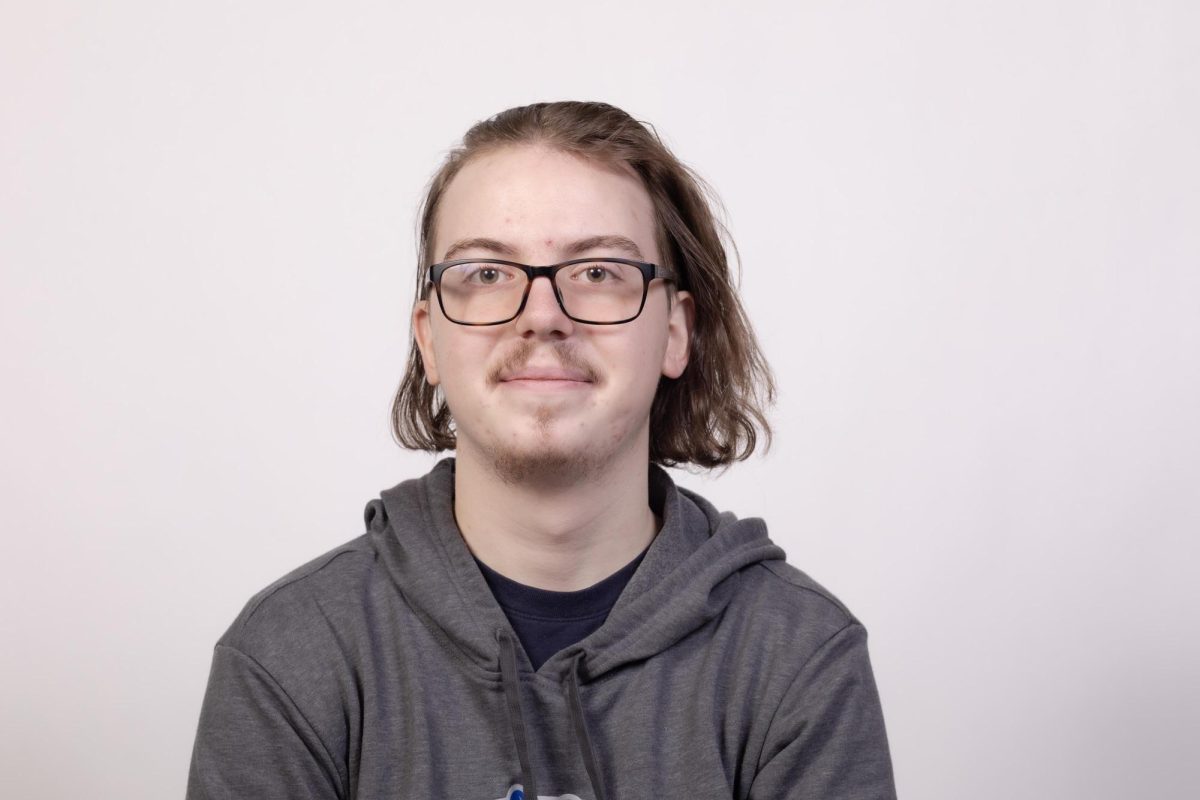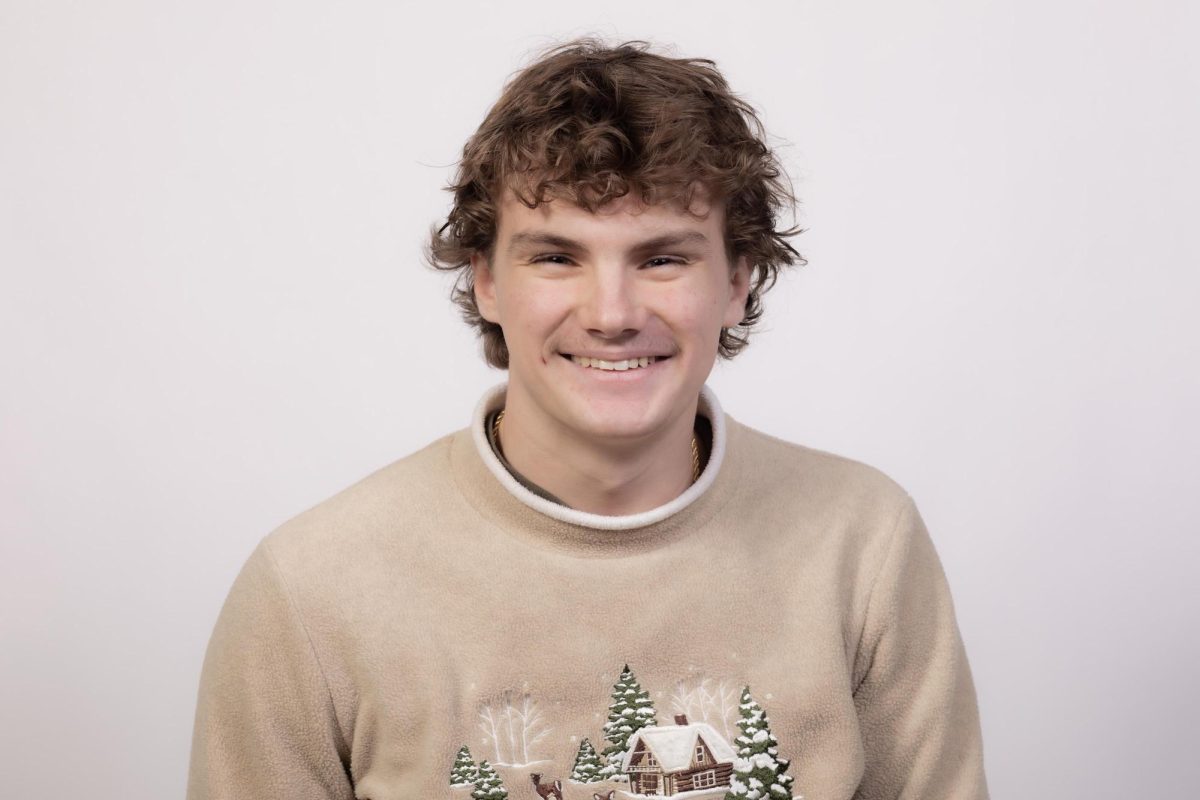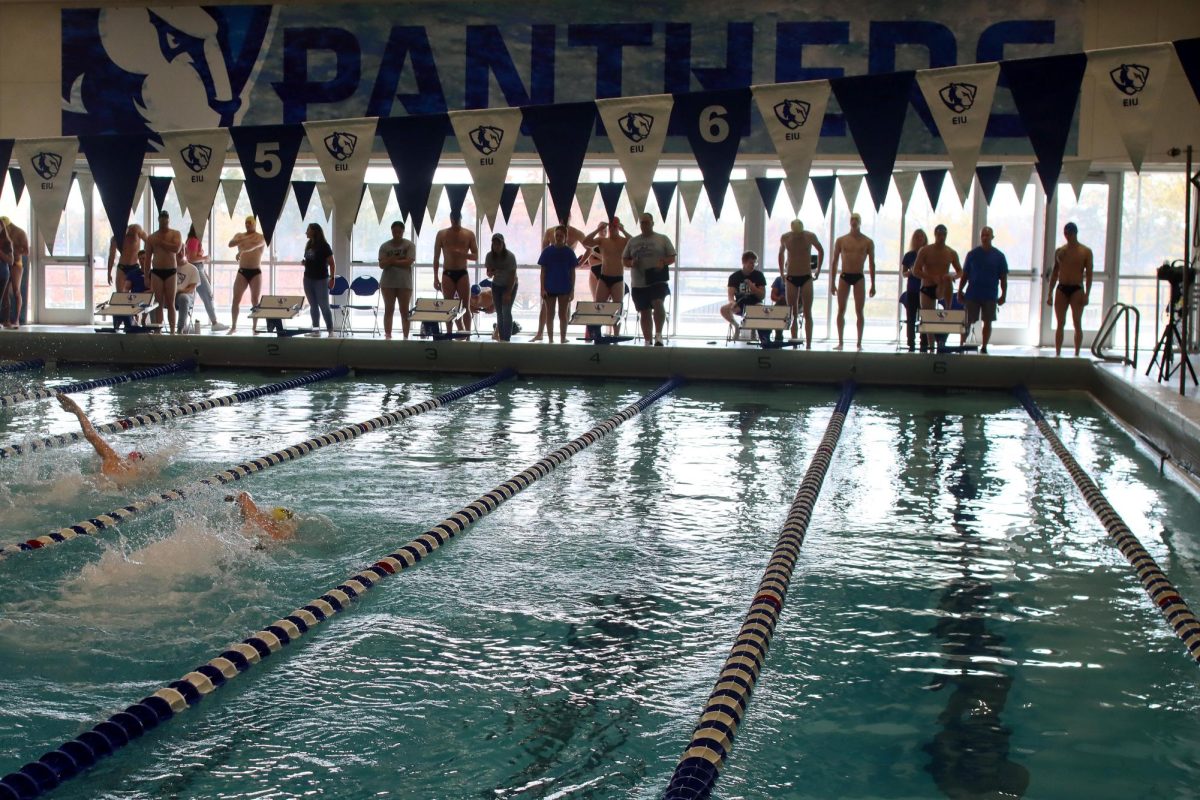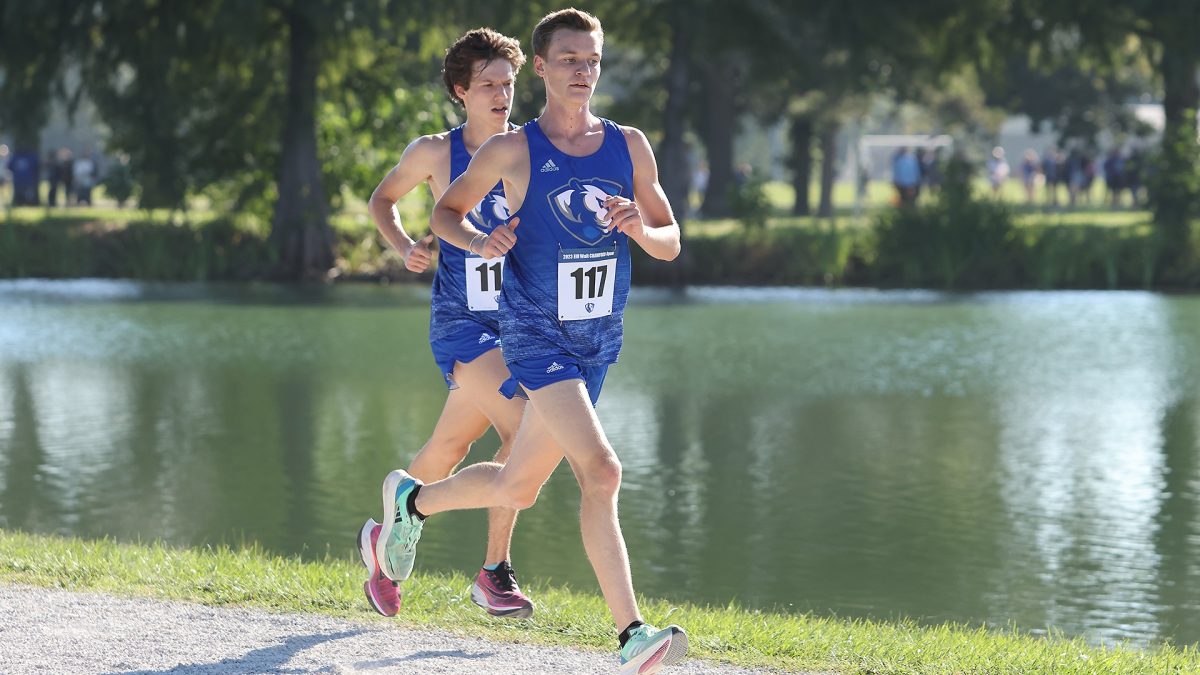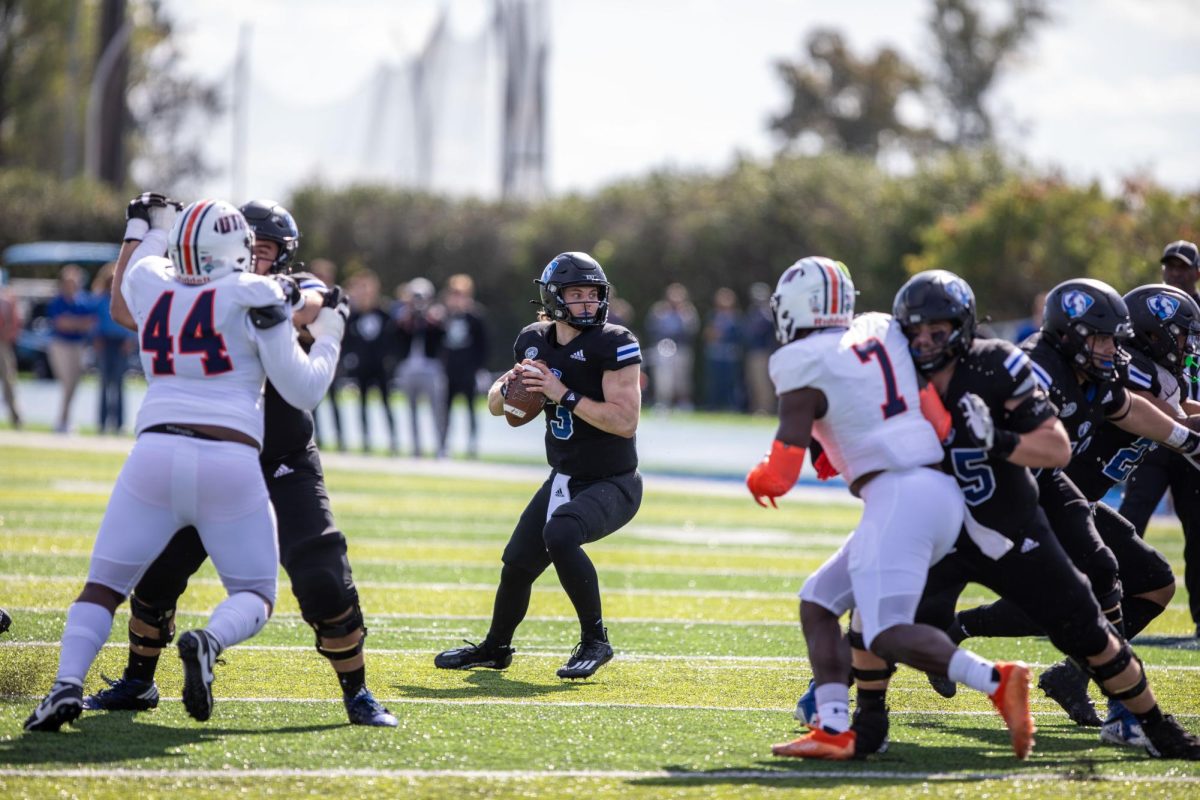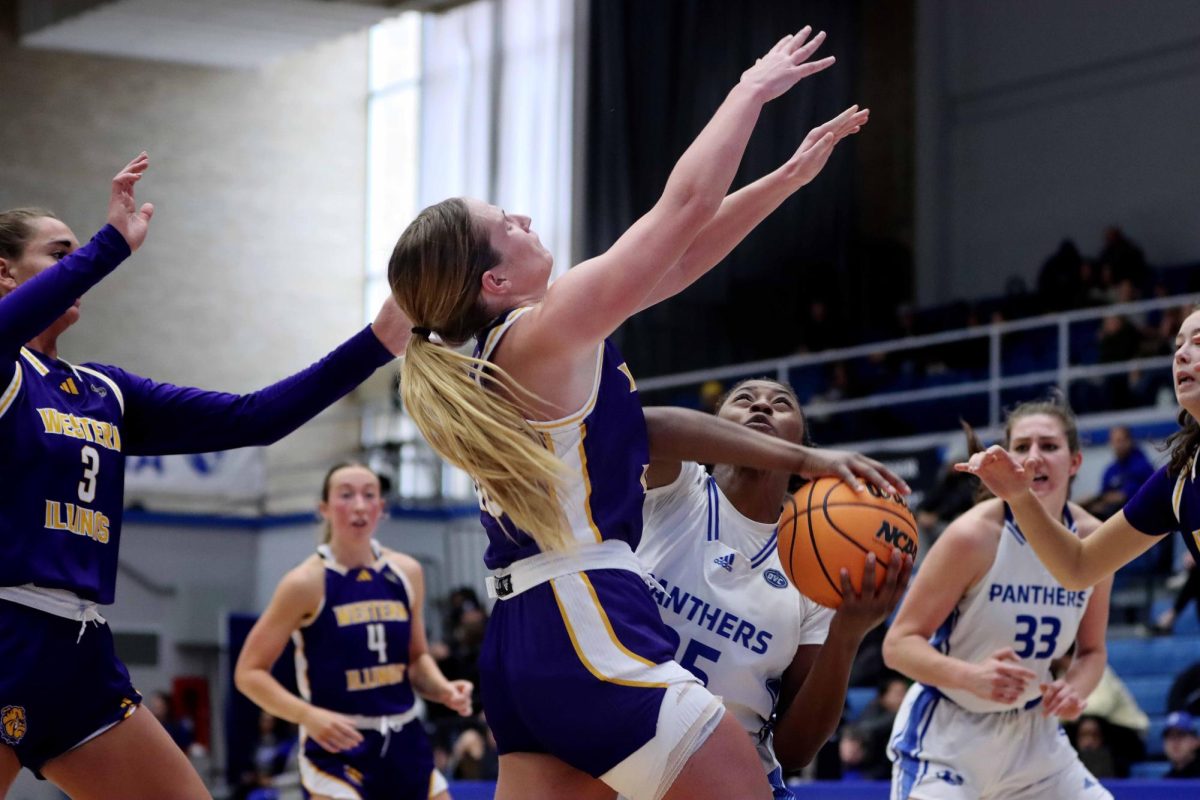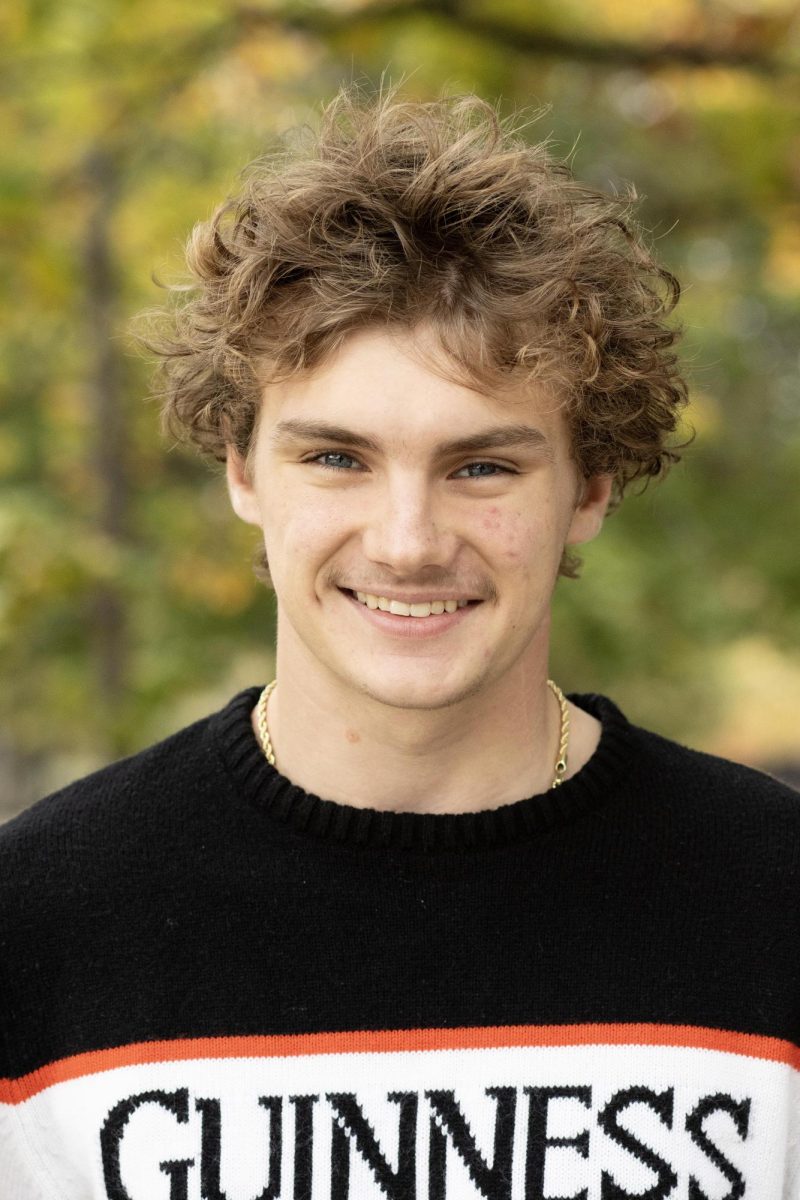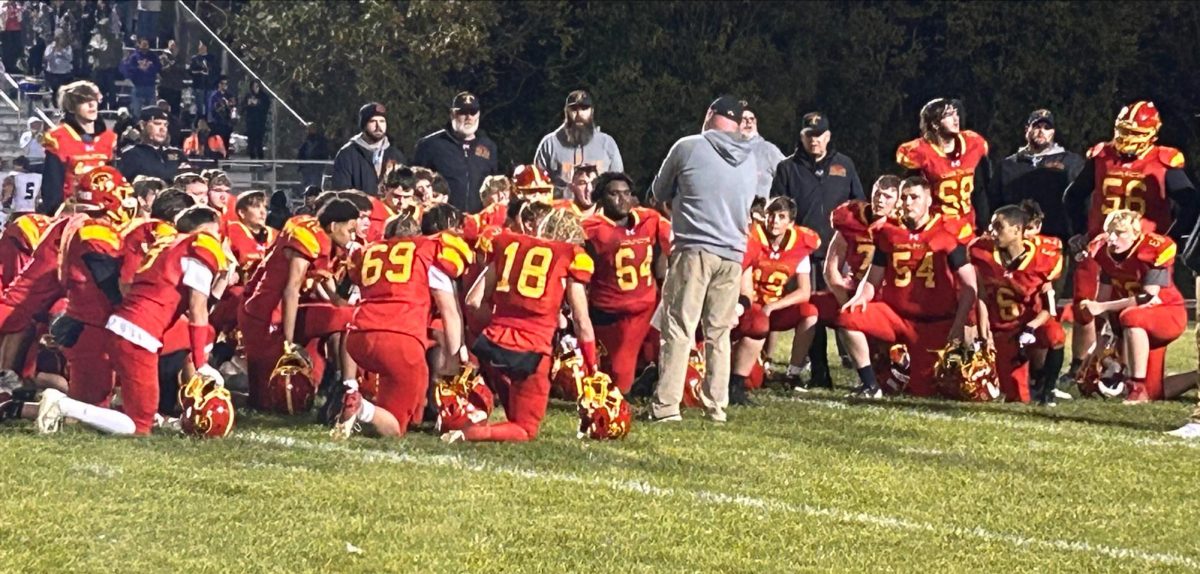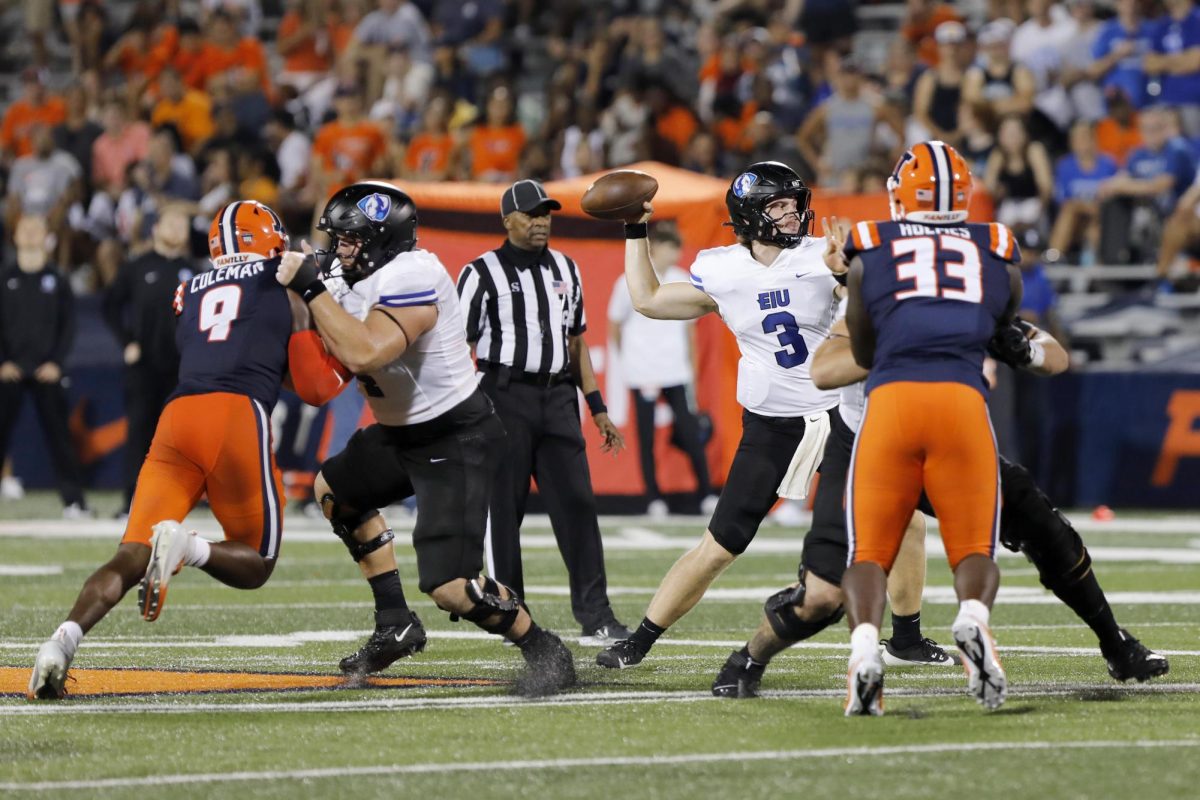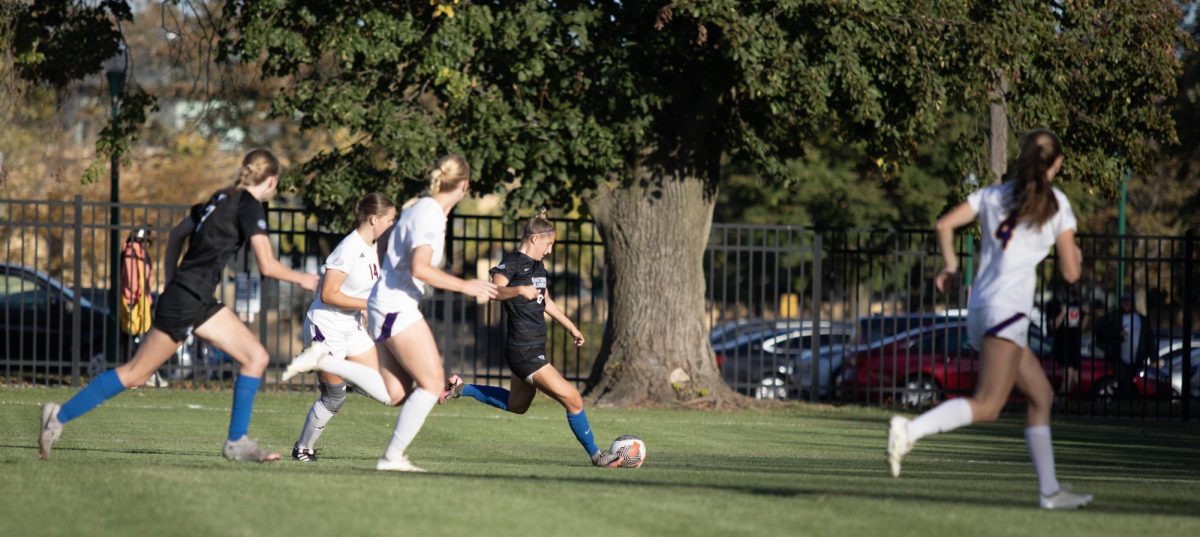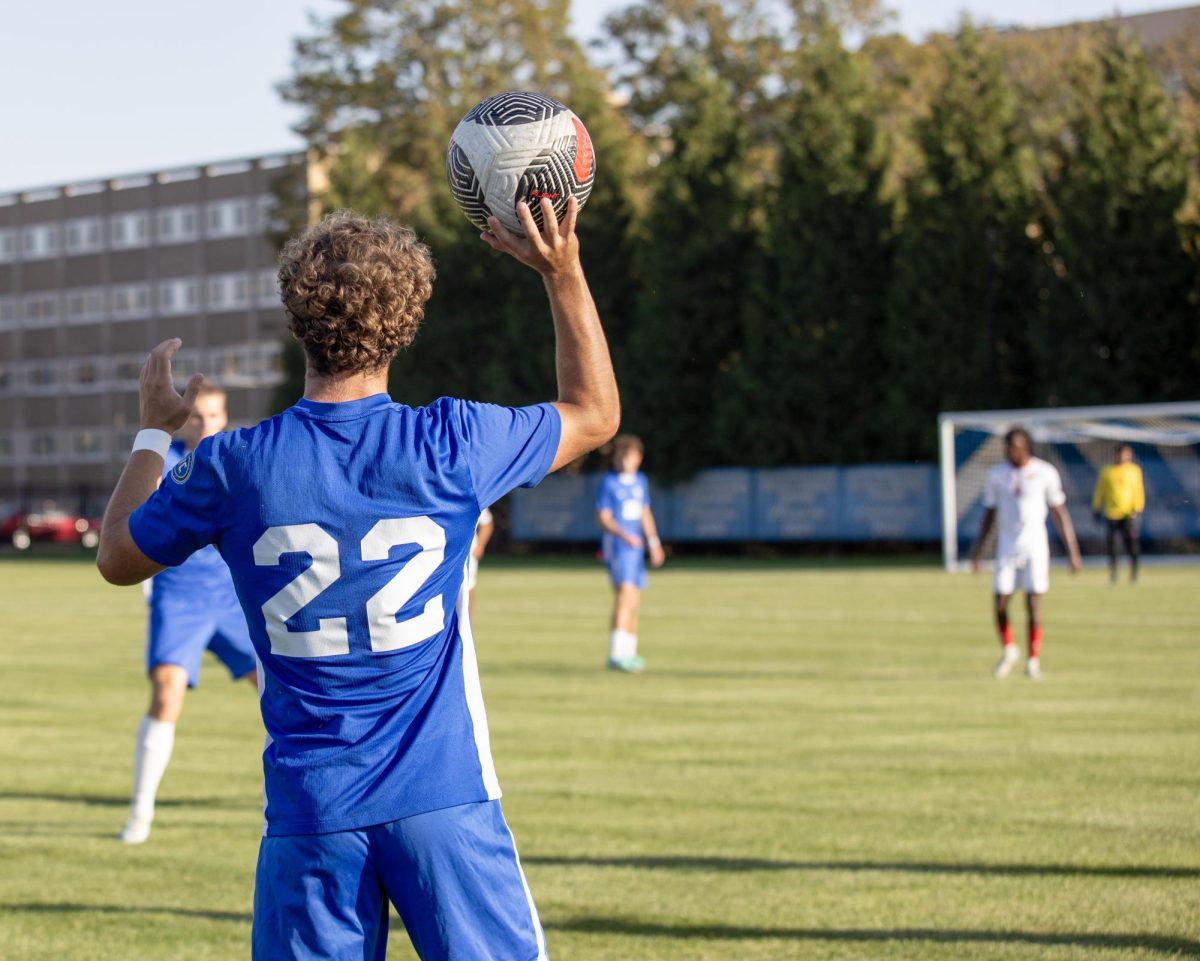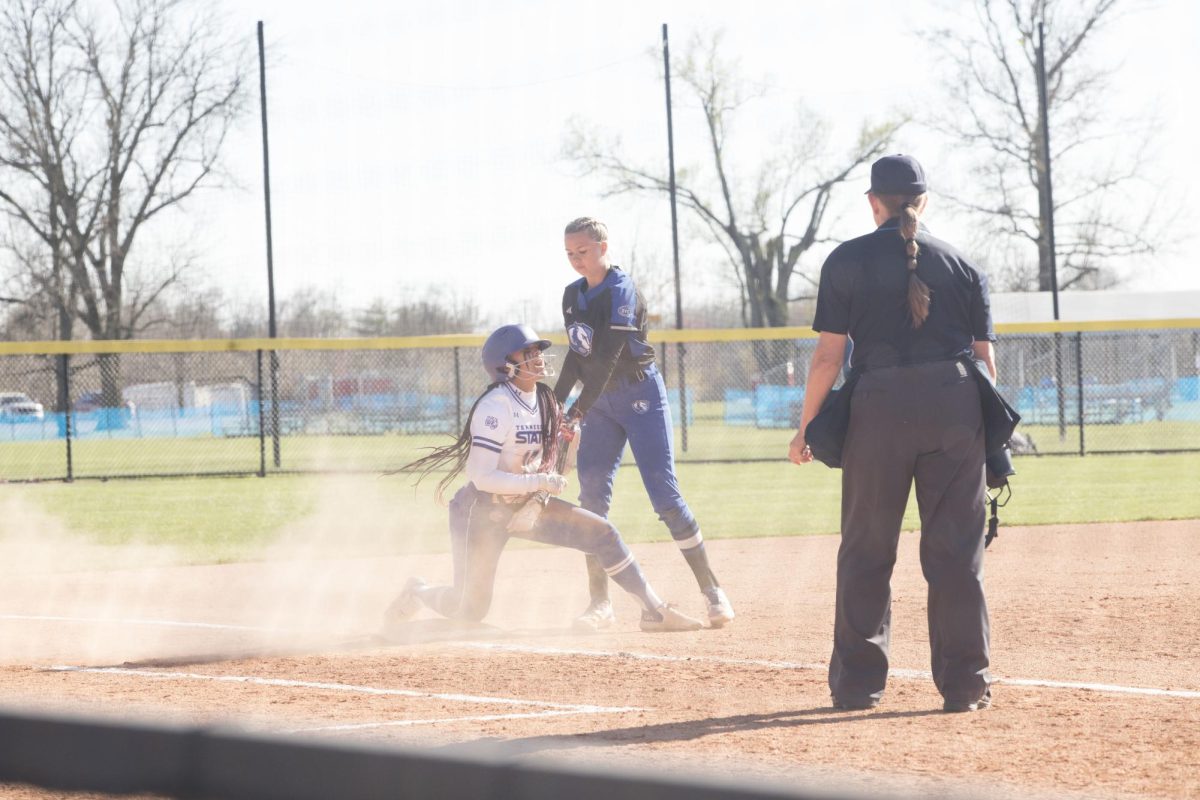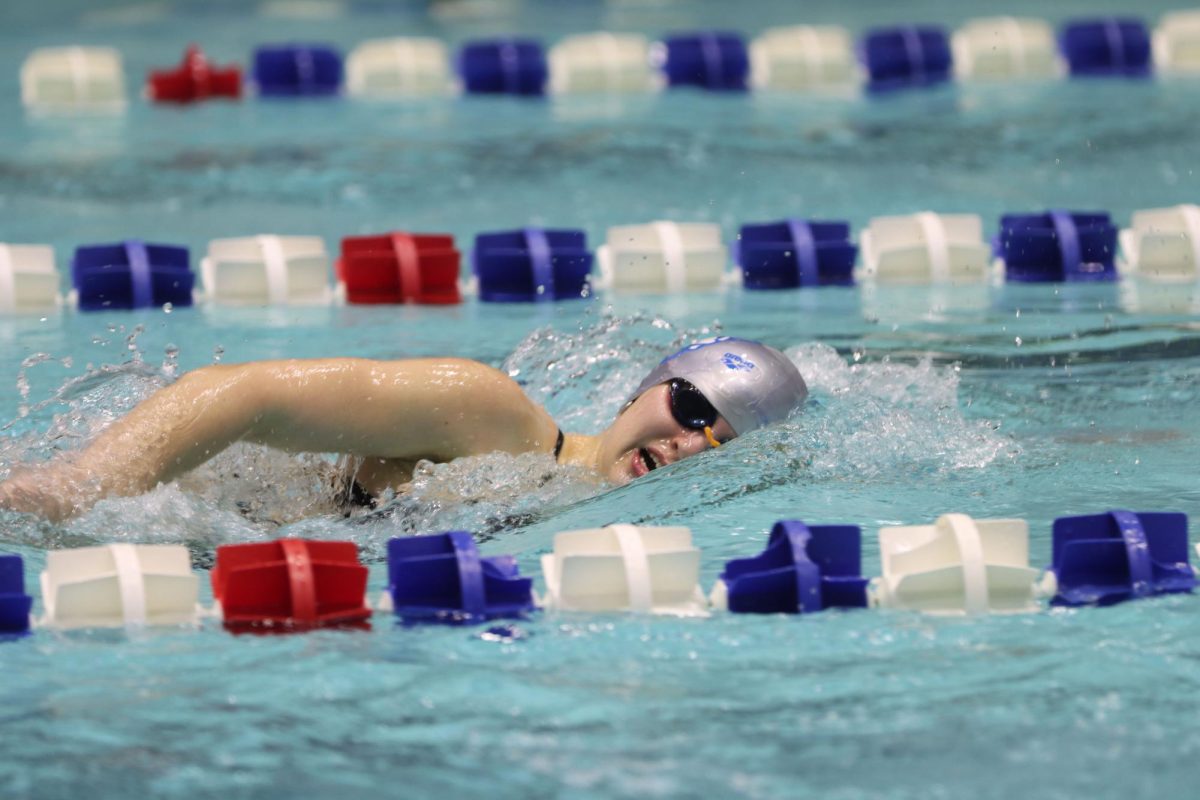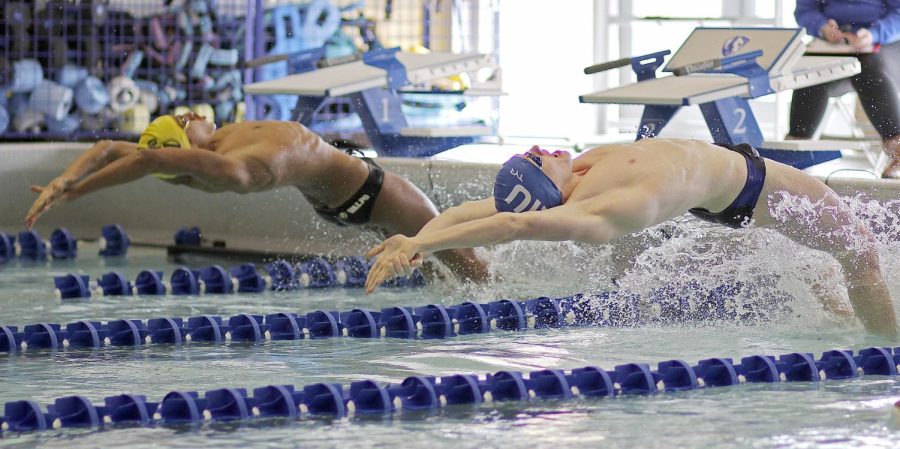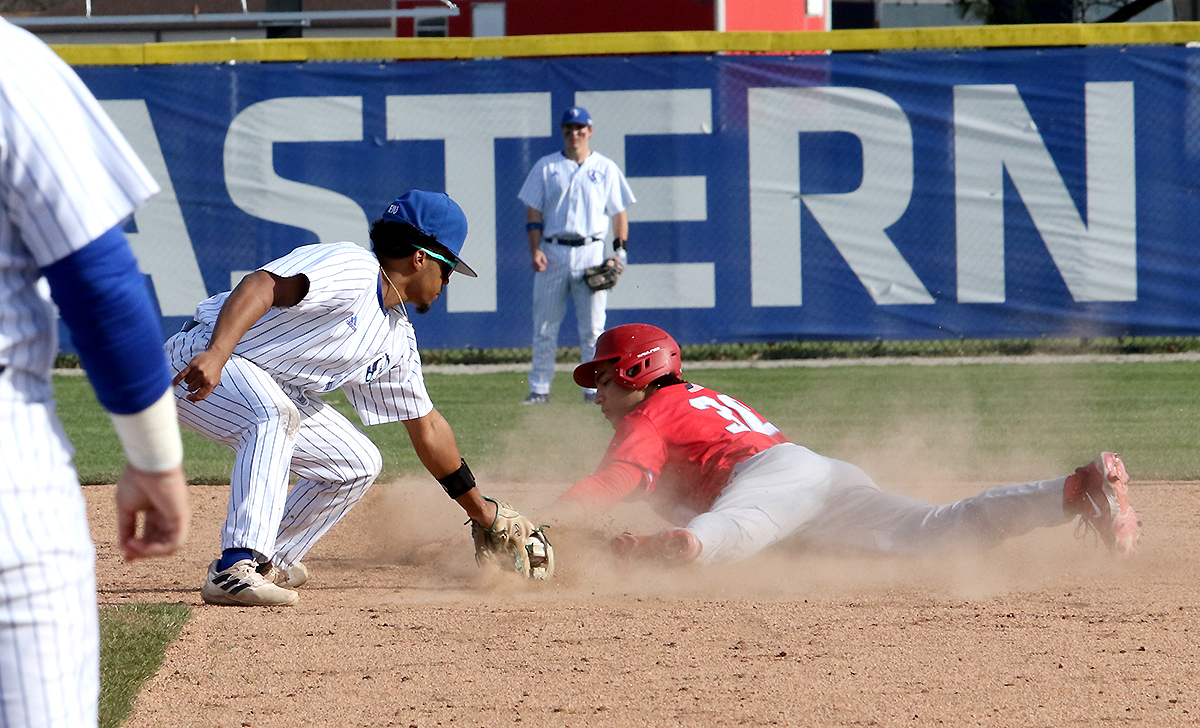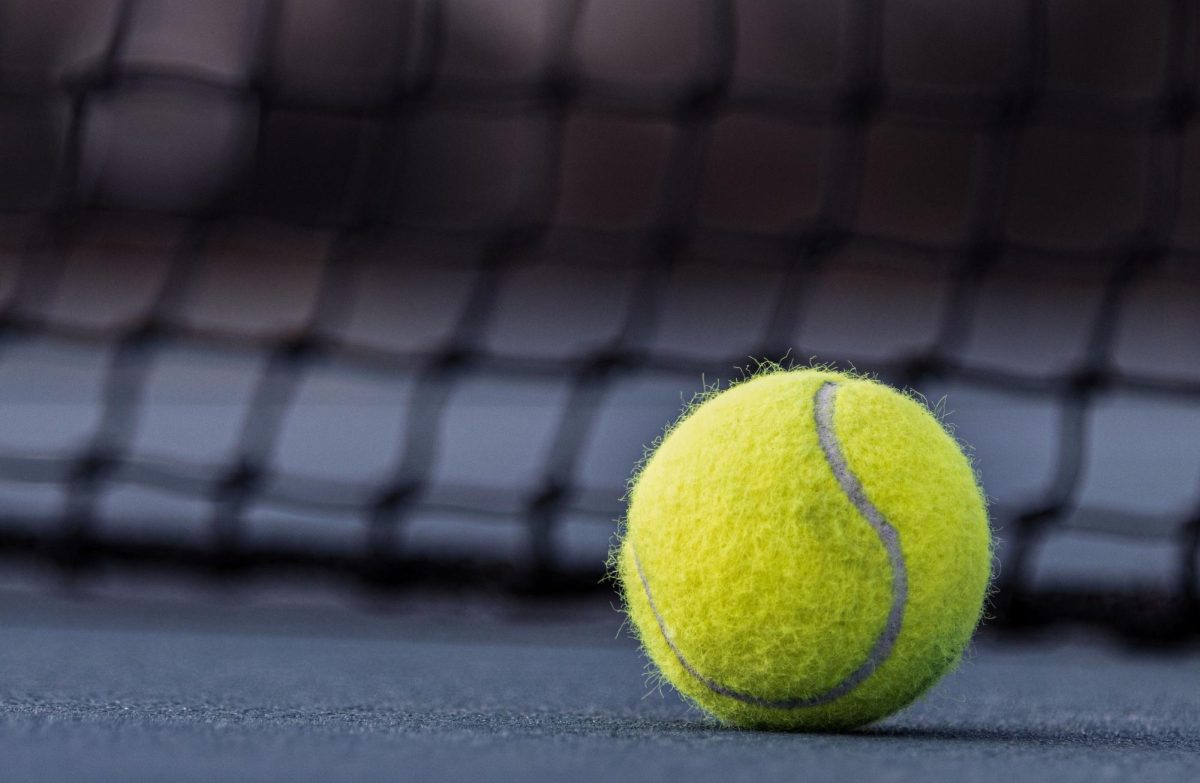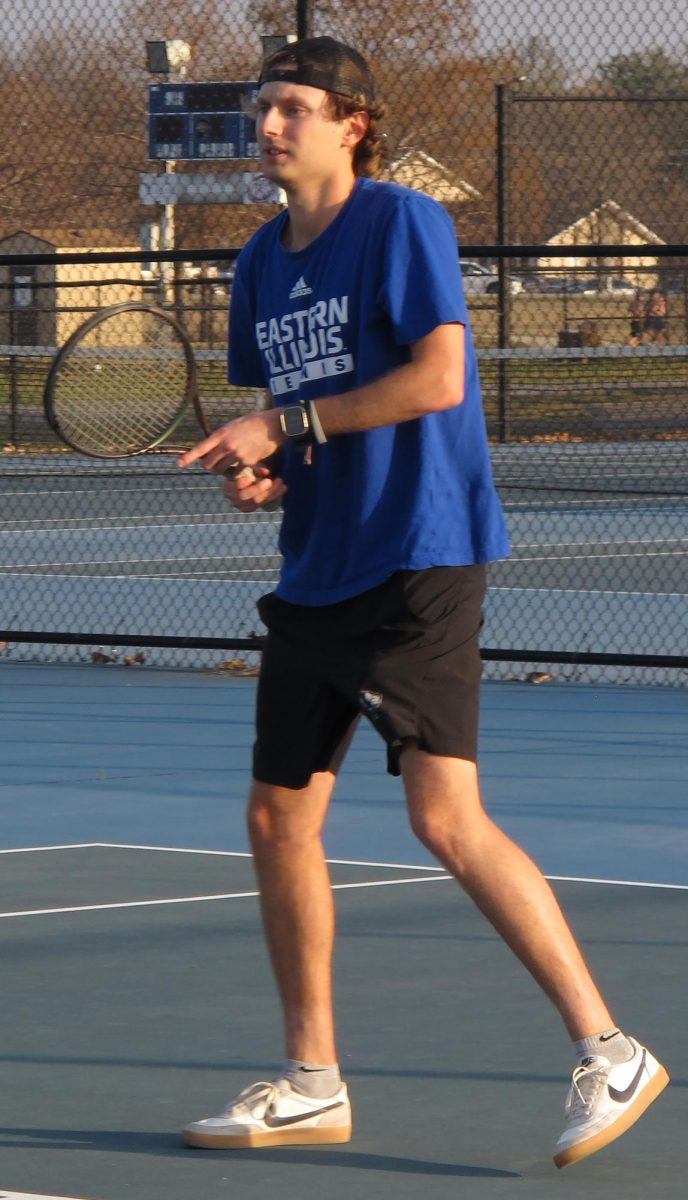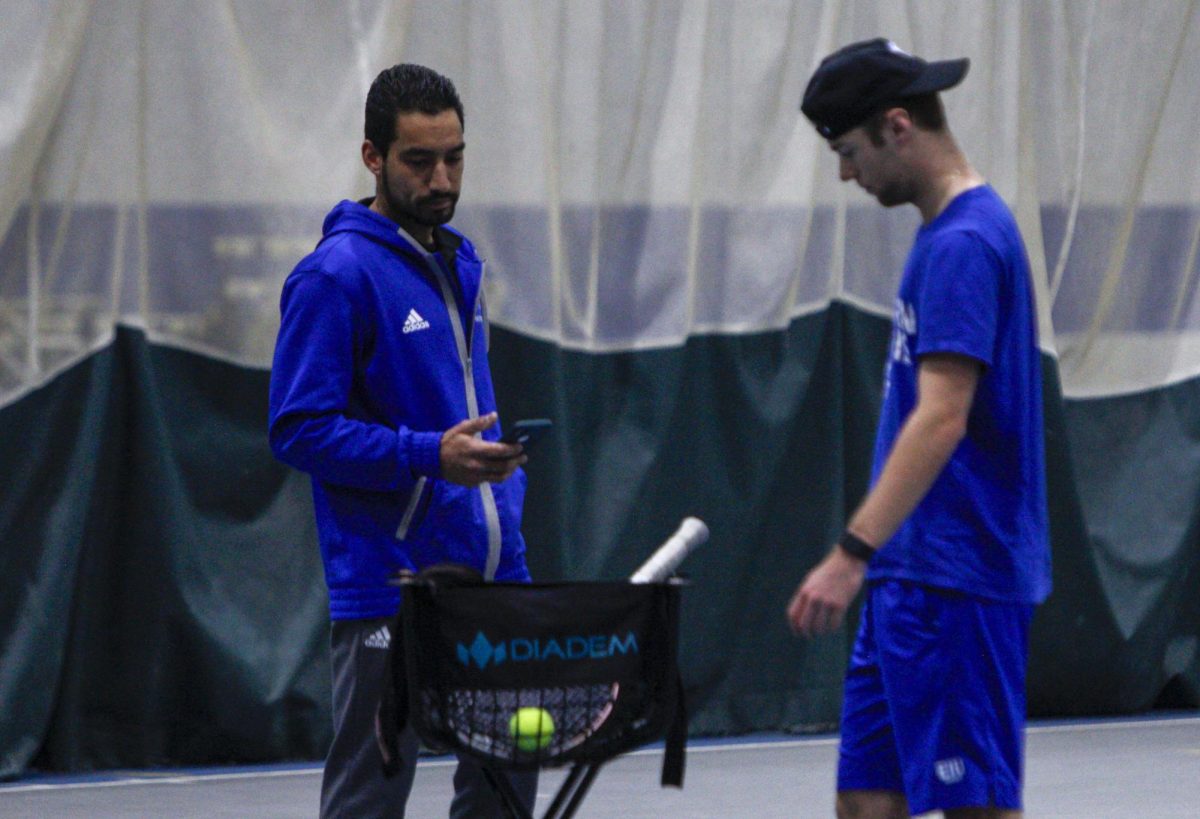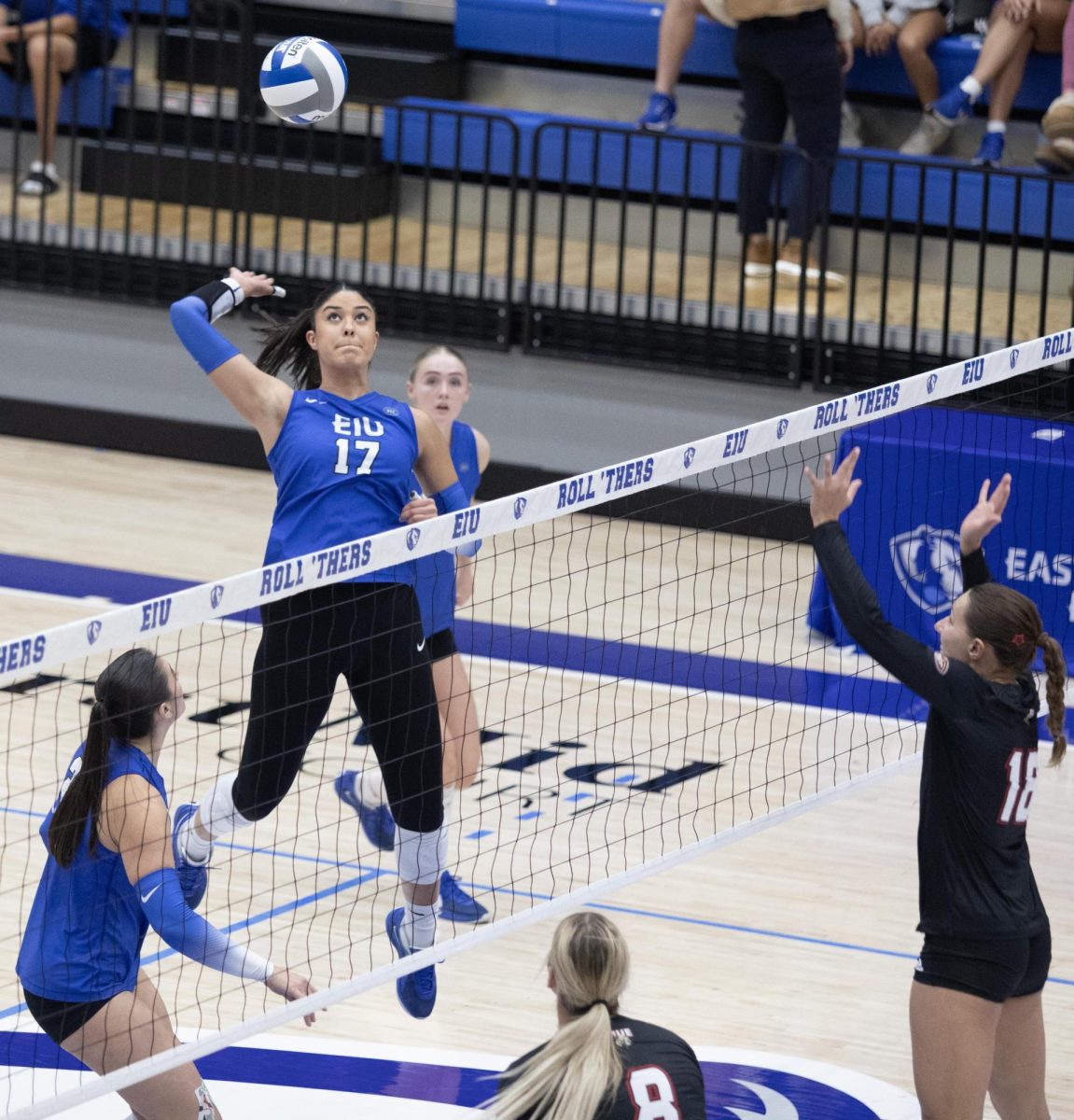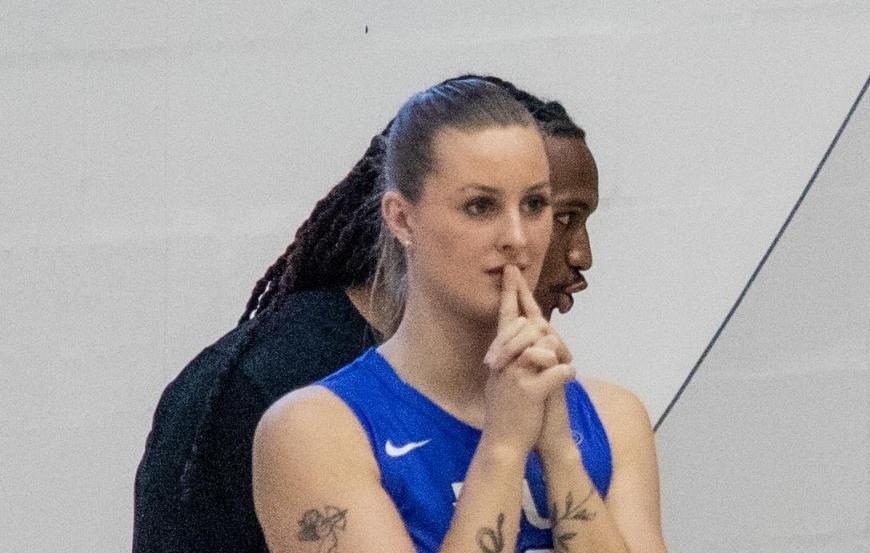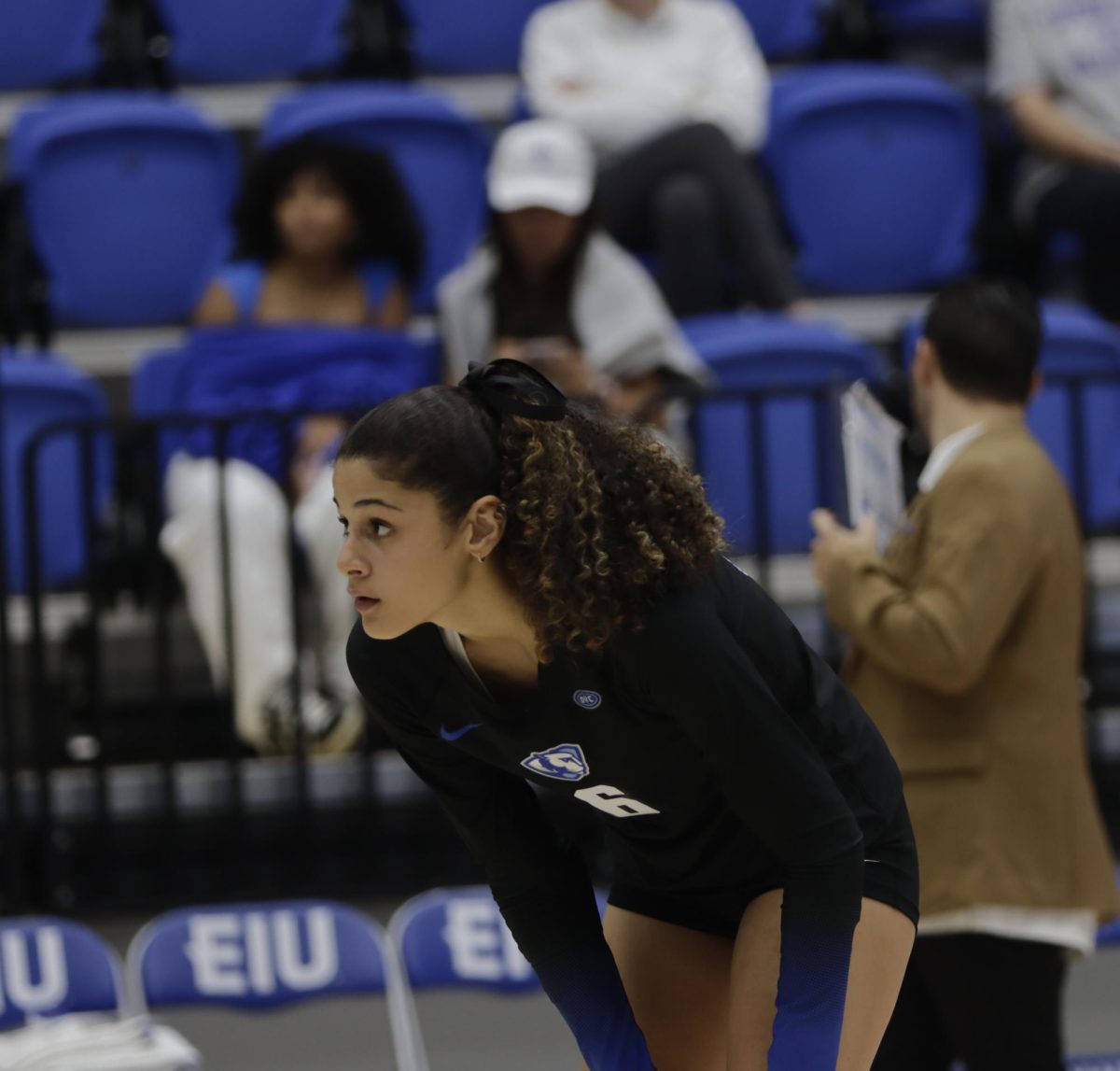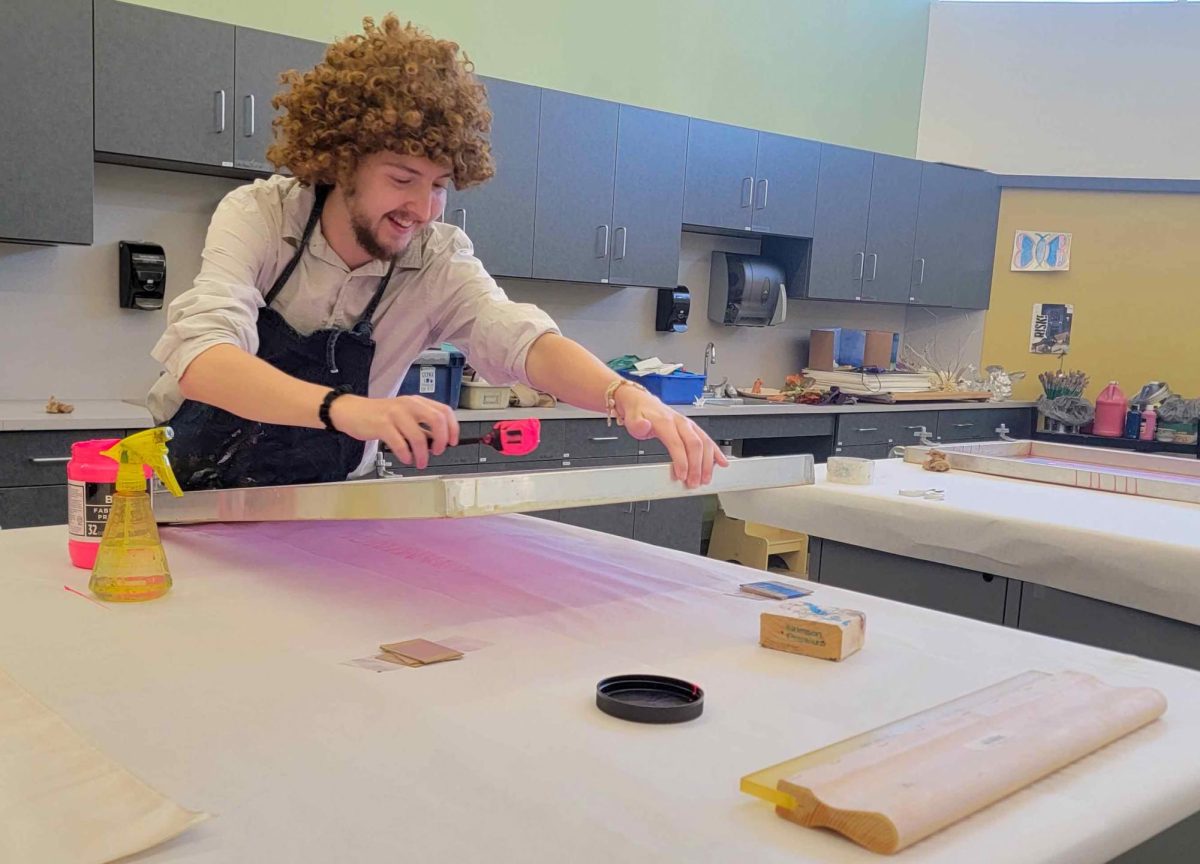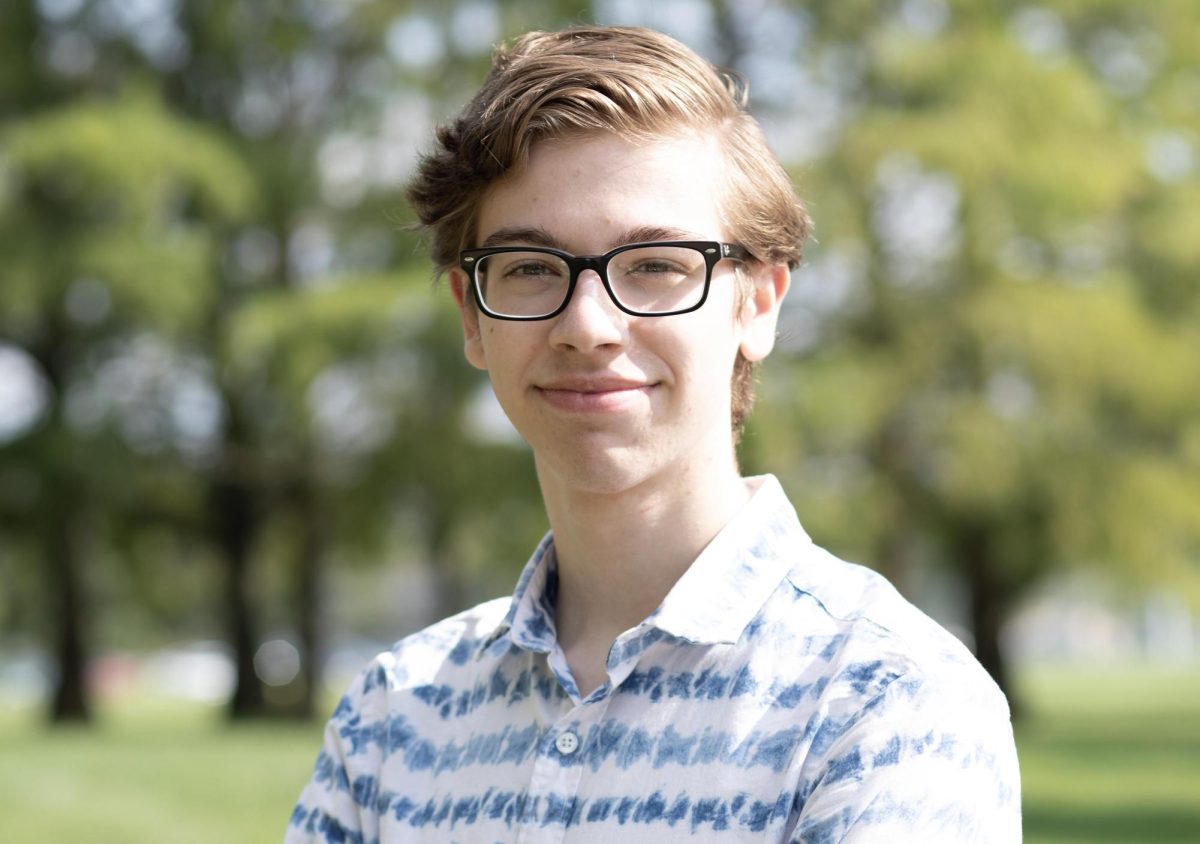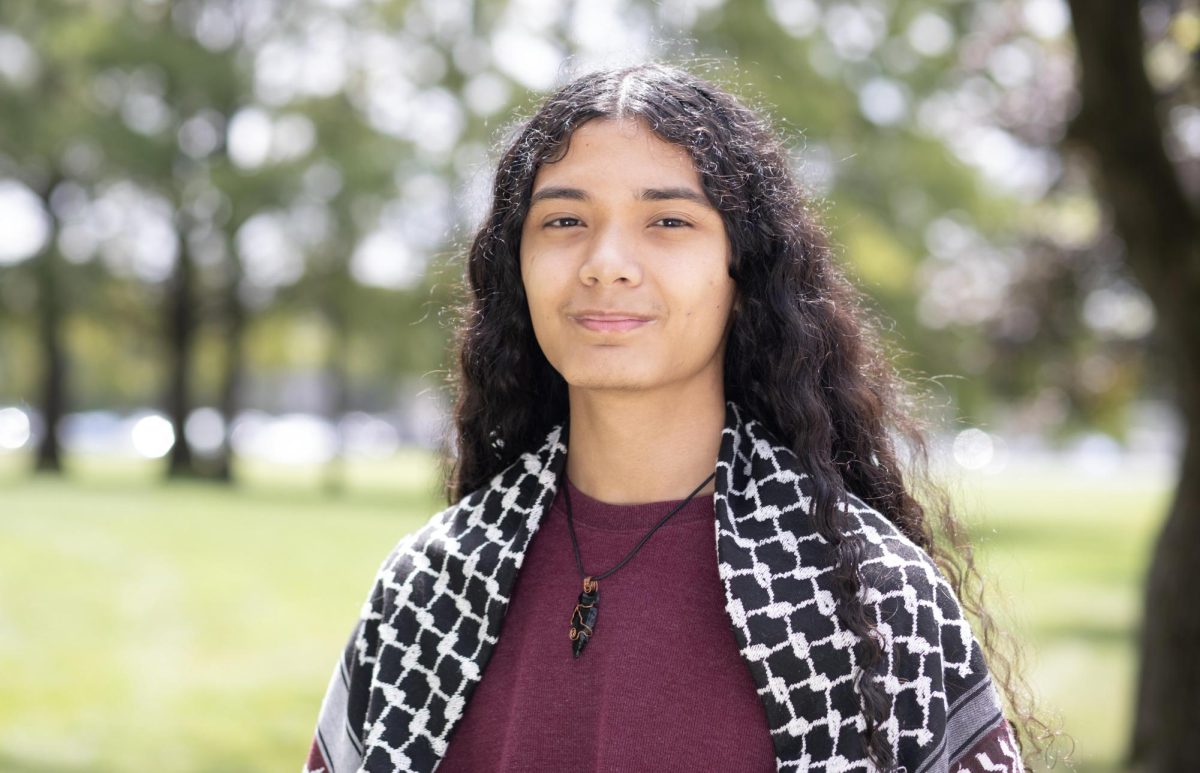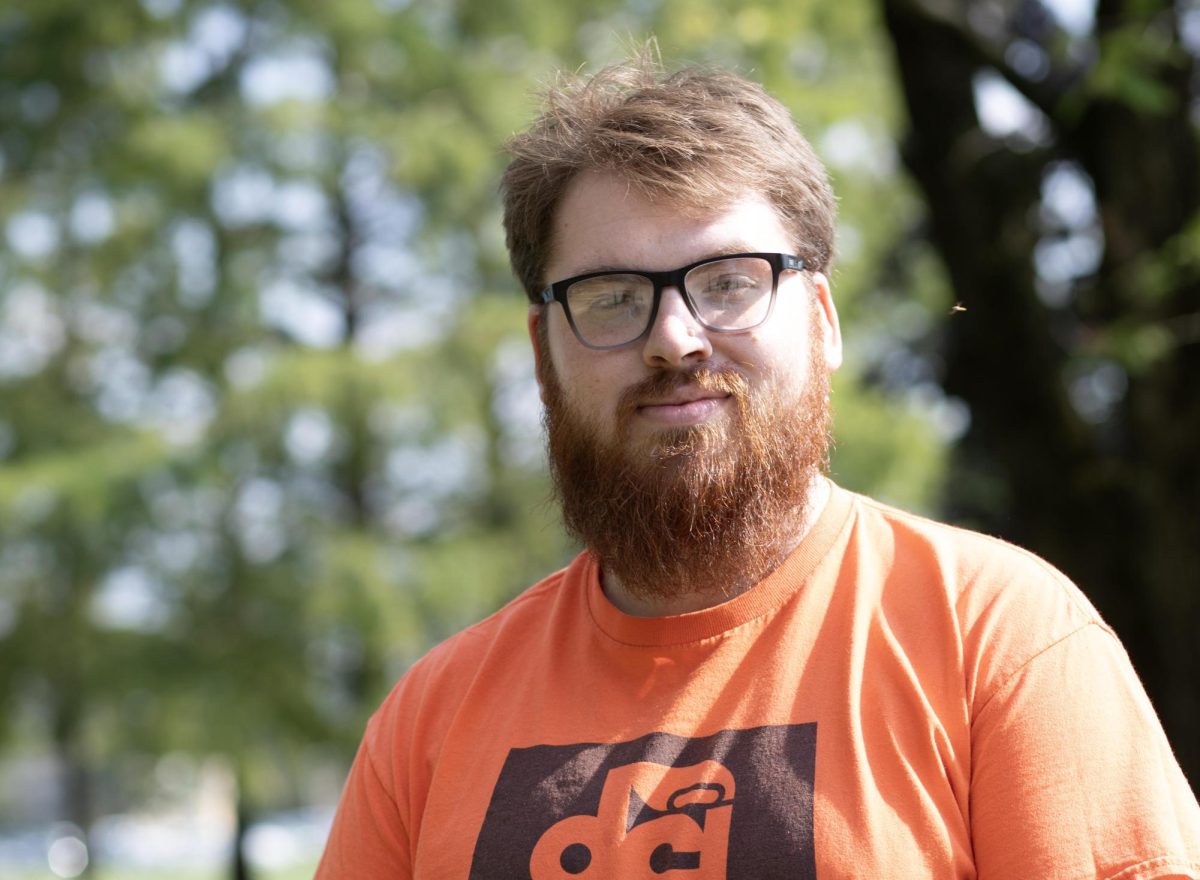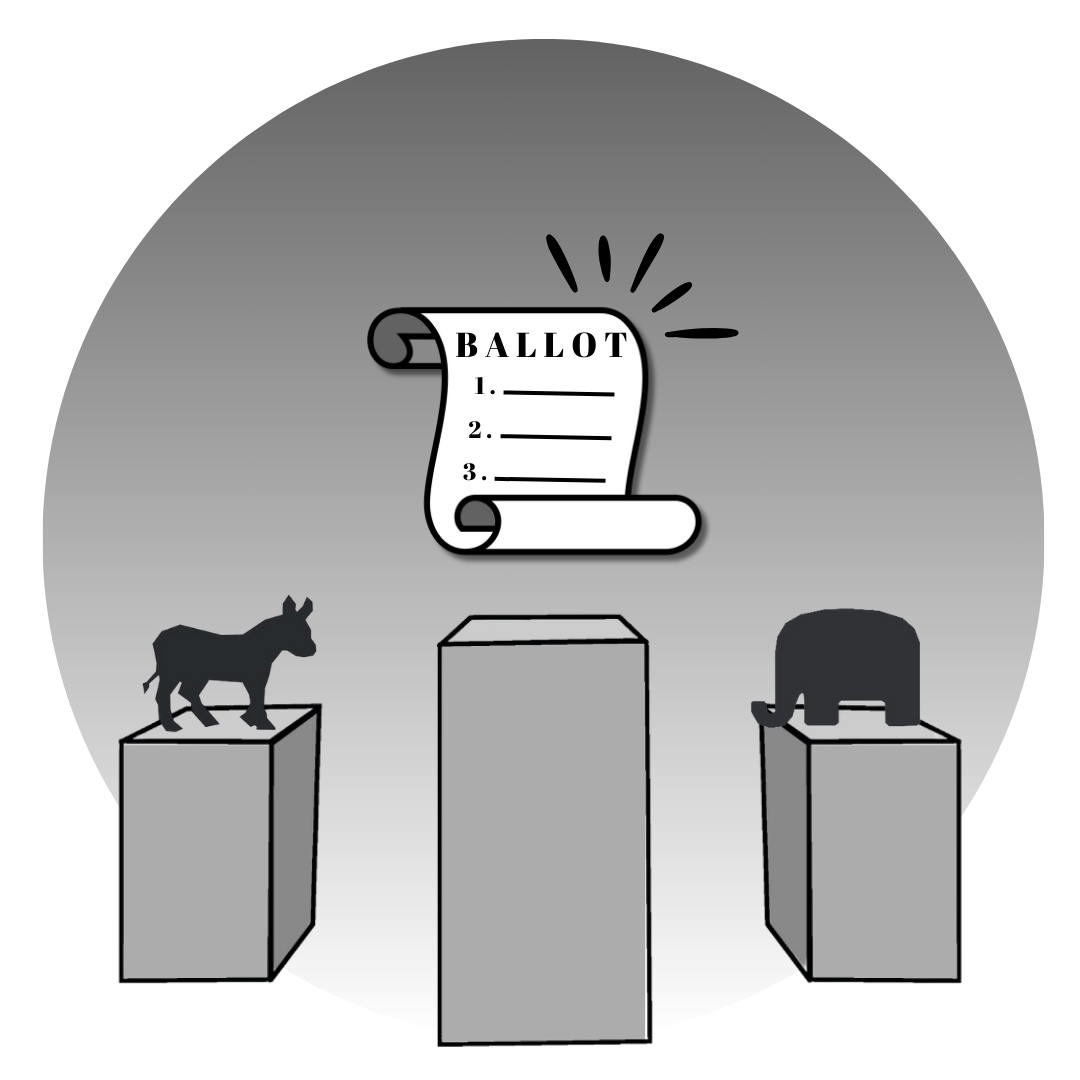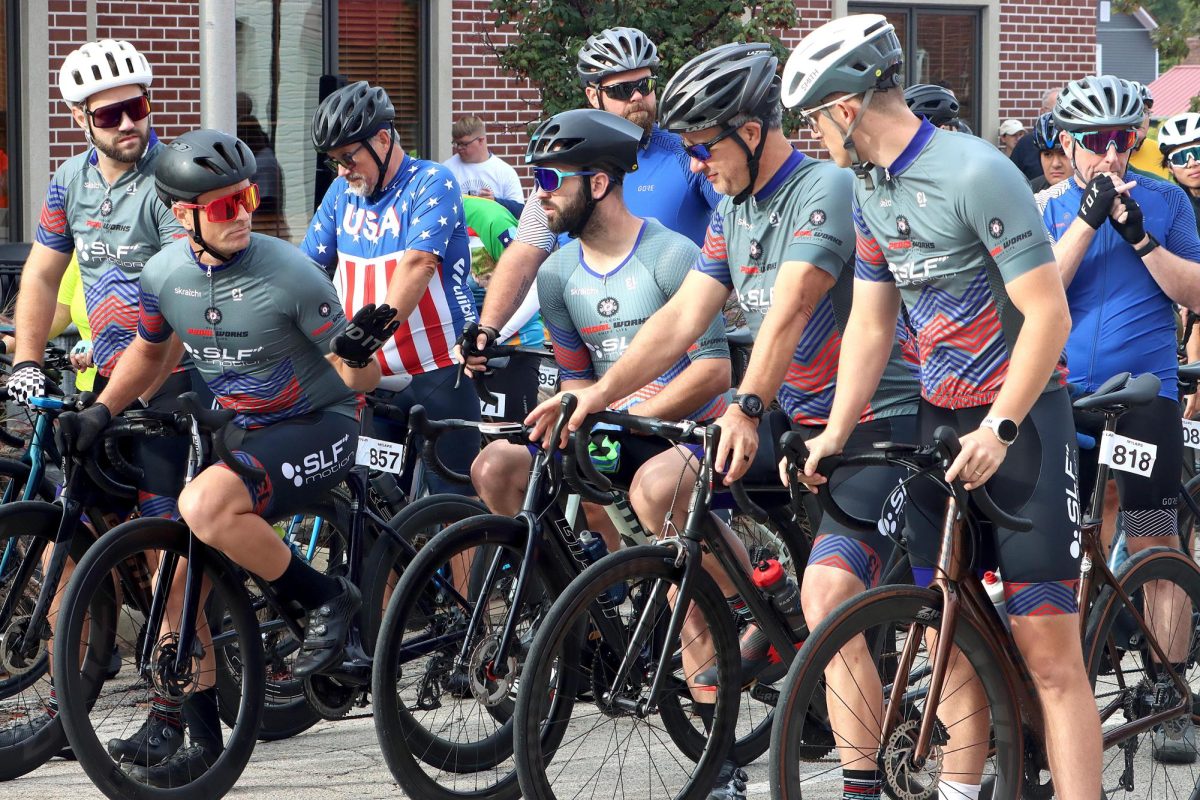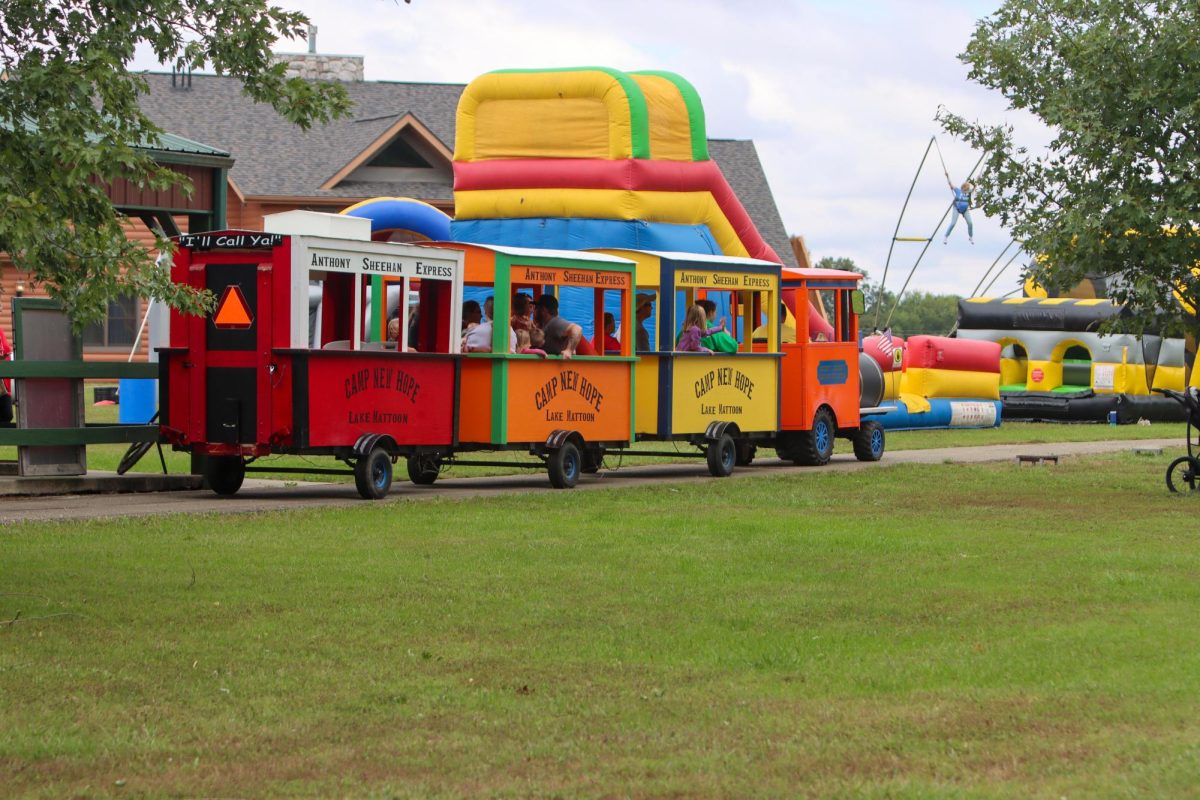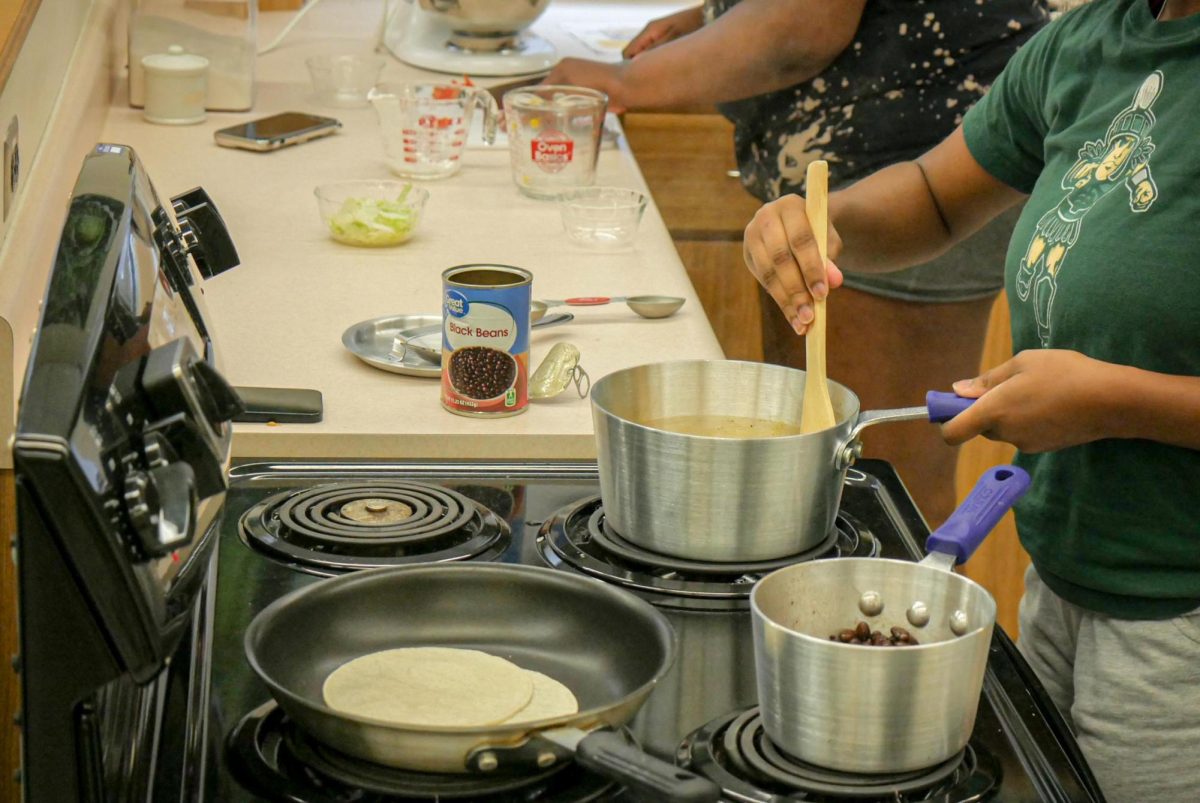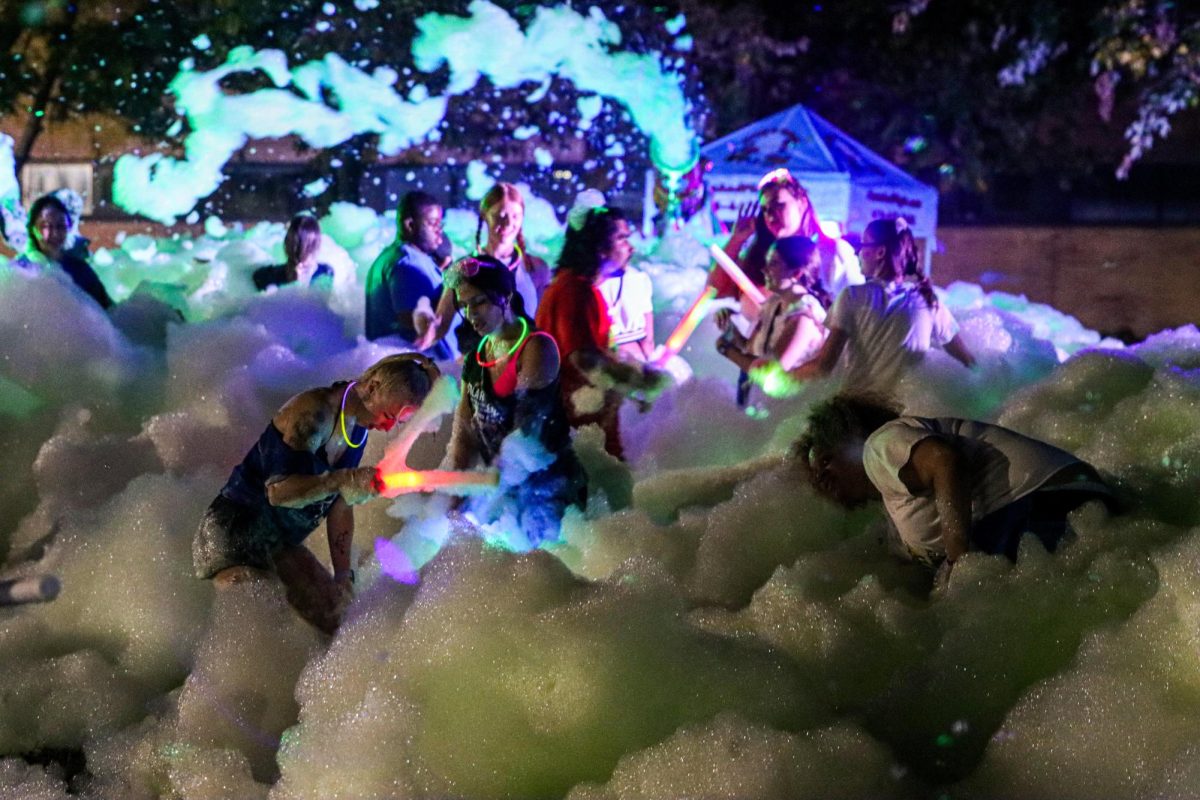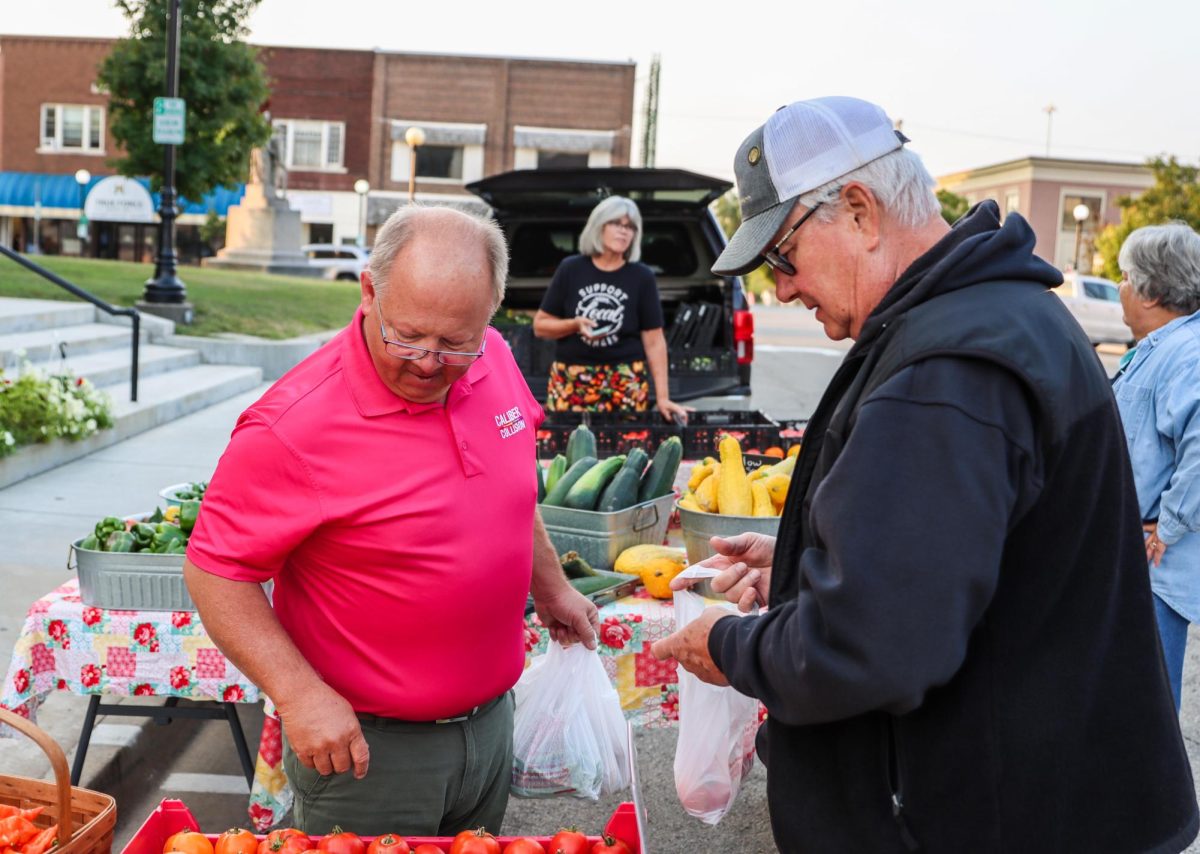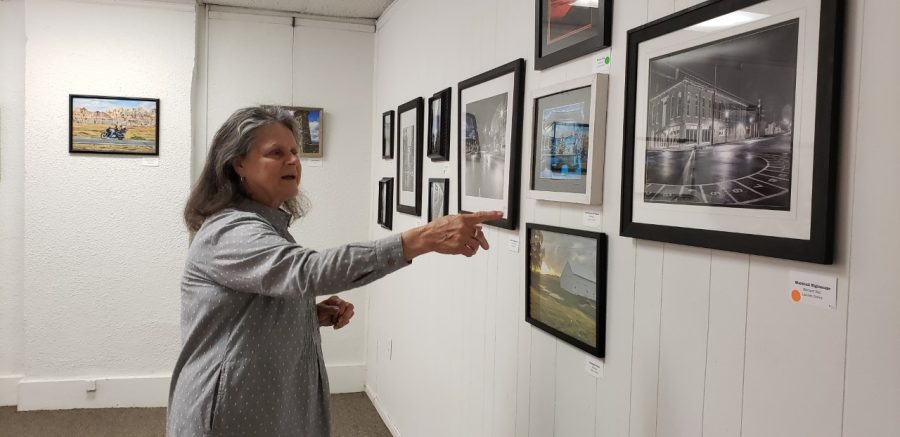Rural art beautifies, enhances communities
Jo Rich-Valdez, the founder and curator of Gaslight Art Colony and Gallery, points out artwork in Marshall.
May 2, 2023
A new funding project out of the Tarble Arts Center was created to support local artists’ creative endeavors and build a stronger connection between the Coles County community and the arts. The project, called Souprize!, took inspirations from similar events like Sunday Soup in Chicago and Sloup in St. Louis, both larger cities with higher populations.
However, Jennifer Seas, director and chief curator at the Tarble Arts Center, said she wanted to bring an event like Souprize! to Charleston as a means of helping people create meaningful connections within a rural community.
“I think in rural communities it’s easy to start feeling isolated just because there’s fewer people around and maybe there’s fewer spaces to meet and come together,” Seas said. “And I think that this is a way to keep people’s hopes up that creative things are happening because there’s not always a good way to share what’s going on and the cool ideas that people are thinking of.”
The event will allow five local artists to give a five-minute pitch on their project that needs funding, and the project with the most points will win the money pot at the end of the night. Attendees who RSVP by May 18th can purchase a ticket for $10 cash at the door, grab some soup, listen to the pitches, and vote on their top three favorites at the end of the night.
Seas said living in a rural community can be like a double-edged sword for a lot of artists.
“The quality of life that is available in terms of time and space in rural communities is very attractive to creative people because they need time to think and to imagine, and they need space to make the things that they make,” Seas said. “But they also need financial resources and that’s what’s missing in a lot of rural communities.”
By the end of the night on May 20th, one artist will have some extra funding for their project and Coles County will have new artwork popping up in the following months to help support beautification of the area. Over in Marshall, the Gaslight Art Colony and Gallery helped produce a project that also supported beautification in their community: the Lion Statues.
Each of the 46 lions around town were sponsored by people or businesses in Marshall, and Gaslight painted all but three of them.
The Lion Statues are one of the many artistic attractions in Marshall, including the various murals scattered around town, but Gaslight itself had raised foot traffic in Marshall since its beginnings in 2009.
Jo Rich-Vadez, founder of and curator at Gaslight Art Colony and Gallery, said Gaslight has made people more aware of the arts in rural communities.
“There’s a lot of people that have come here from Terre Haute that, you know, possibly hadn’t been coming over prior to the Gaslight opening, and I get calls from other communities for the shows,” Rich-Vadez said.
Gaslight created a sense of tourism for Marshall, and tourism is a great opportunity for small towns, said economics professor at Eastern Illinois University (EIU) Linda Ghent.
“Dollars that come in from other areas are injected into the local economy, and the effects of these dollars get multiplied by the additional spending of those earning higher incomes as a result of the tourism,” Ghent said.
However, Ghent said the economic impact of the arts in rural towns depends on the income levels within that community.
“Rural communities that are near high-income levels within the state will have better results in both attendance and the amount of economic impact seen from the arts,” Ghent said.
The arts play a key role in the U.S. economy whether they be in rural or urban communities.
In 2021, arts and cultural economic activity increased 13.7 percent after decreasing 4.8 percent in 2020, according to the Arts and Cultural Production Satellite Account (ACPSA) released by the Bureau of Economic Analysis (BEA) in 2023. Also in 2021, the broader economy by real gross domestic product (GDP) increased 5.9 percent after decreasing 2.8 percent in 2020, according to the ACPSA from the BEA.
Of the GDP in 2021, arts and cultural economic activity made up for 4.4 percent or $1.02 trillion across the U.S., according to the ACPSA from the BEA.
In Charleston, there is no civic funding for arts programs, and arts organizations must rely on grants or funding from charitable foundations to finance their projects. Coles County Arts Council (CCAC), who helped organize the Souprize! event, does some nonprofit funding of $2,000-$4,000 worth of projects yearly through their grants program.
Charlotte England, president of CCAC, said the grants are up to $500 at a time for one project and typically go towards prizes for arts events.
“It’s pretty small potatoes, but sometimes small potatoes are enough in a small town to get something done,” England said.
England said places like Gaslight who have regular events attract people into town more often and ultimately allow for people to spend their money at local businesses within these rural communities.
“The more attractive you can make a place, the more likely people are to not just dash in and out of it, but to spend some time there,” England said.
Despite the financial and economic impact of the arts, Rich-Vadaz said rural communities offer artists a sense of comfortability and peace that larger areas may not be able to provide.
“When you have an art place, you could feel part of something without having to go into a larger town where you feel uncomfortable or intimidated in some part, you know, with a larger city that you didn’t know,” Rich-Vadaz said.
Local artist Jamie Willis has lived in Mattoon for the last 40 years after graduating with her masters in art from EIU, working as an art teacher in Charleston and Mattoon for 30 of those years.
Willis works in fiber art, but also works in other mediums like painting, watercolors, weaving, and more.
After experiencing being an artist in a rural community for many years, Willis said continuing her art in a small town has enriched her life and helped created social networks.
“My greater artistic community, they are my friends, and they’ll be friends for life,” Willis said. “You know whether we’re talking about art or just having a cup of coffee together. It’s Our Community.”
Willis still produces art to this day and has her artwork displayed in public collections in places like the Link Art Gallery in Paris.
Whatever craft it is that is made, England said the arts are what keep your head and your heart alive.
“For many people, the arts are a way to make a difference in the world or to make things more beautiful or to challenge themselves,” England said. “So, that, I think, is where they fit into quality of life. They keep our head alive and imaginations going.”
Heather Vosburgh can be reached at dennewsdesk@gmail.com or at 581-2812.


